April/May 2023

NZ’S AUTHORITY ON FOOD TECHNOLOGY, RESEARCH AND MANUFACTURING

FEATURED INTHIS ISSUE:
NZIFSTConference 2023 Preview
Overview: Food Ingredients forall applications
NZIFSTLawsonWilliams’SalarySurveynow open
THE OFFICIAL JOURNAL OF THE NEW ZEALAND INSTITUTE OF FOOD SCIENCE AND TECHNOLOGY INC.
APRIL/MAY 2023 | VOLUME 23, NO.2
ISSN 2744-7308 (ONLINE) ISSN 1175-4621 (PRINT)
Copyright © 2023 Peppermint Press
No part of this publication may be reproduced or copied in any form by any means (graphic, electronic, or mechanical, including photocopying, recording, taping information retrieval systems, or otherwise) without the written permission of Peppermint Press. The views expressed in this journal are those of the writers and do not necessarily represent the view of the Publisher, the Scientific Review Board or NZIFST
Director and Editor
Anne Scott, Peppermint Press Limited anne@foodnz.co.nz
Director and Writer
Dave Pooch, Peppermint Press Limited davep@me.com
Advertising
Anne Scott, anne@foodnz.co.nz 021 901 884




Design and Layout
Johanna Paynter, Pix Design
Regular Contributors
Phil Bremer, John D Brooks, Laurence Eyres, Ben Sutherland, Dave Pooch, John Lawson
Published by Peppermint Press Limited
Notice to Contributors
When submitting editorial for Food New Zealand please observe the following, Editorial to be submitted as plain text files, NO FORMATTING please. Images should be sent as high resolution .jpg or .tiff files. Do not embed images in word documents, send separate files. Any images smaller than 500 kb may not be printed as the clarity of the print may be compromised.
Advertisers
Material specification sheet and rate card on website, www.foodnz.co.nz

Food New Zealand 2 NZ’S AUTHORITY ON FOOD TECHNOLOGY, RESEARCH AND MANUFACTURING Contents 14 4 EDITORIAL 5 NEWSBITES 10 OILS & FATS News from the world of lipids Laurence Eyres FNZIFST 12 NZ FOOD SAFETY Upholding our food safety system in an emergency Vincent Arbuckle, Deputy Director General, New Zealand Food Safety 13 SLIDING ON We studied slime for 19 years! 14 INGREDIENTS Food New Zealand’s ingredient finder for all applications 26 RESEARCH Revolutionising meat tenderisation Indrawati Oey, Sze Ying Leong, Phil Bremer, Pat Silcock 28 NZFSSRC Undercover operations Contacts Peppermint Press Ltd 5 Rupi Court, Mt Wellington Auckland 1072, New Zealand Phone 64 21 901 884 www.foodnz.co.nz Food NZ is distributed online to all members of the New Zealand Institute of Food Science and Technology. An online edition is shared internationally. Visit www.foodnz.co.nz to subscribe.
28 31
Executive Manager, Wendy Bayliss
PO Box 44322
Pt Chevalier Auckland 1022
New Zealand
Phone: 022 549 8483, Email: wendy@nzifst.org.nz
Website: www.nzifst.org.nz
31 PACKAGING
Packaging News roundup
34 RESEARCH
More health benefits from Greenshell™ Mussels
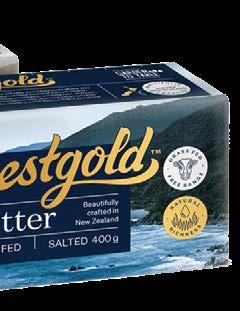
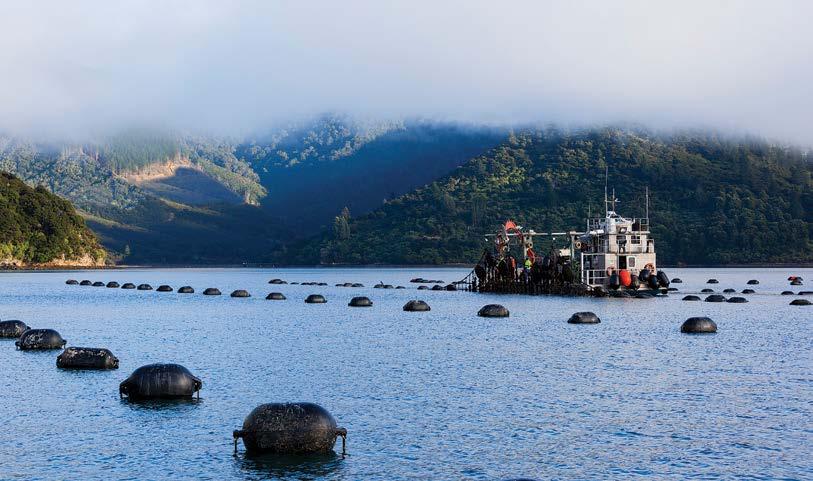
36 DAIRY RESEARCH
Pāmu Deer milk, a lifechanging natural superfood

38 ENGINEERING
Dewatering of waste expands disposal options

40 CAREERS
What has happened to Salary packages in the NZ Food Industry?
John Lawson, Lawson Williams Recruitment
41 NZIF ST N EWS INCLUDING
59th Conference update 2023 Plenary Speakers
Call for Nominations for NZIFST Officers
New Members
Branch News
46 NZIF ST HISTORY
The Food Awards
JOIN NZIFST NOW for Professional Development Networking – connecting with your peers
Regular information about your industry
Recognition through awards, scholarships, travel grants www.nzifst.org.nz/join/
On the cover
Cover image: A great food product needs great ingredients – and skilled product development. See page 14 for a sampler of ingredients for all applications.


Next editorial and advertising deadline: May 20th, 2023
Features for June/July 2023
NZIFST Conference preview: Handbook, programme, highlights
April / May 2023 3
34 38 36
On behalf of the NZIFST Executive, Board, local branch representatives and members, I would like to express our sympathy to the NZIFST members who have been adversely affected by the recent weather events. I acknowledge the hardship you are going through and I encourage you to reach out to your fellow NZIFST members for support and advice during this challenging time. The NZIFST prides itself on being a supportive and networked community and now is the time for us to demonstrate our commitment to this vision. I am aware that many of our members, and the companies that support the NZIFST, have already generously provided advice and support and I thank them for this.
In recognition of the challenges our members around the country are facing, the NZIFST is offering 10 scholarships, each of $500, to support NZIFST members to attend the conference in Dunedin in July. Please feel free to contact either me or Wendy Bayliss if you are interested in applying.
The conference in Dunedin is coming together extremely well. I have seen the draft speaker list and the social programme and I am confident that it will be an enjoyable educational extravaganza. Of note is that the conference is being held in conjunction with the New Zealand Food Safety Science and Research Centre Annual Symposium and during the International Science Festival. The conference starts off with a NZFSSRC Woman in Science breakfast (NZIFST members can attend, but bookings are required) at 7.15 am on Monday and from then to its end on Wednesday afternoon the Conference is jam packed with talks and activities. In addition, to this glut of “Science”, the National Brass Band Championships run from July 5 to 8th in Dunedin. To avoid disappointment please book your travel and accommodation ASAP.
This is the time of year when we go out to our membership requesting nominations for Executive and Local Branch positions. I strongly encourage you to consider volunteering and sharing your knowledge, experience, ideas and enthusiasm. We will also shortly be requesting nominations for our annual awards, scholarships and fellowships that recognise the achievements of our Members, and the companies and organisations in the New Zealand food industry. Please look around your workplace and consider who would be a worthy recipient.
This is also the time of year when our branch committee members are busy visiting universities and encouraging student members to join the NZIFST. While all branches are doing a great job, the Canterbury Branch is obviously onto a winning formula with a spectacular increase in the number of Lincoln University students joining. I would like to warmly welcome all of our new members, especially the student members. I hope that you have an enjoyable and successful year and a long and productive association with the NZIFST. Please feel free to reach out to your local branch members or members of the Executive if we can be of help with your professional development.
I hope that you are able to enjoy the last of the summer weather. I am very much looking forward to being able to make you feel welcome in Dunedin in July.
Phil Bremer FNZIFST, President NZIFST

Food New Zealand 4 EDITORIAL Editorial
Phil Bremer, President NZIFST
Newsbites
Newsbites is Food New Zealand’s pick of the news stories about NZIFST members, about companies with relationships with NZIFST plus items that catch our interest.
Two kiwifruit a day for a better night’s sleep
Eating two green kiwifruit a day can improve your sleep quality and mood, and leave you feeling refreshed in the morning, new research shows.
Riddet Institute PhD candidate, Alex Kanon, and his supervisor, Dr Sharon Henare from Massey University, researched the benefits of eating two kiwifruit in the evening and found an immediate positive effect, with participants experiencing a better sleep the same night. The research was conducted over the past 2 years.
The Riddet Institute is a Centre of Research Excellence (CoRE), hosted by Massey University in Palmerston North, focusing on advanced food research.

“Other studies have looked at sleep and kiwifruit over a longer period of daily consumption – around 4 weeks. We wanted to see if we could see an acute effect: Can you eat kiwifruit now and feel the benefits straightaway?” says Alex.
The research in healthy men (half with poor sleep and half with good sleep) saw participants eating an evening meal, followed by either 2 fresh green kiwifruit (without skin) or 2 powdered dried kiwifruit (with skin) or water. The research team then measured sleep quality, mood and urinary biomarkers.
“We found that regardless of whether you normally have good or bad sleep, kiwifruit had an immediate positive impact on different aspects of sleep quality and mood,” says Alex.
“Both groups felt that it was easier to wake up in the morning and they felt less sleepy after eating the kiwifruit. There were also improvements in their psychological wellbeing in the morning, with significant improvements in positive mood, esteem and vigour.”
“Serotonin plays a central role in the regulation of sleep-wake cycles. We saw significant increases in serotonin metabolite the morning after participants ate fresh or dried kiwifruit.”
The research was funded by the High-Value Nutrition National Science Challenge and supported by Zespri International Limited, who contributed fresh Zespri Green Kiwifruit.
“The study shows there is potential for Aotearoa New Zealand kiwifruit-based products with health messaging related to sleep quality and mood, while also potentially bringing increased economic benefits for kiwifruit growers,” says Joanne Todd, High-Value Nutrition Challenge Director.

“We know there is crosstalk between the gut and the brain and these results highlight the importance of that link. The study findings are encouraging and contribute to the growing body of evidence of kiwifruit’s impact on mood and wellbeing,” says Paul Blatchford, Zespri Innovation Manager.
Alex and Sharon’s research will be published in Frontiers in Nutrition, section Nutrition, Psychology and Brain Health.
Newsbites
Positives from social media
– Food posts on social media helping drive research, and change.
Agresearch scientists review social media research
If you have ever shared a hot take on social media about a food choice or eating experience, then you could be helping researchers who study consumer preferences and attitudes and in turn influence the evolution of food production.
The collection and analysis of digital data from social media for “sensory-consumer” science has grown rapidly over the last decade, with a “wide range of applications for research studying consumer attitudes, preferences, and sensory responses to food”, according to a recently published review* in the journal Food Research International by food scientists from crown research institute, AgResearch.
The AgResearch review looked at the potential of social media research for this purpose, including advantages and disadvantages, and then compared this to more conventional research methods that might include gathering groups of people for consumer testing of a food product in a controlled environment, and providing feedback directly to researchers.
“We found that analysis of social media for this research offers advantages such as scale, accessibility and may present an increased ability to investigate trends over time, as well as easier access to crosscultural or global insights,” says AgResearch senior scientist, Scott Hutchings.
“There are, however, disadvantages where it comes to the data from social media, including the significant influence of biases of people posting that are difficult to account for in the science. Often consumers that make up a social media data set are not representative of the general population or target market (for example age, gender, personality biases are common), and in most cases we have no demographic information on who the consumers are in our social media data set. While participant biases can also impact on conventional research methods, they can be more easily overcome when working with those methods”
“Then there is also the issue of the overall precision of the data from social media being generally inferior to that other research methods”
Social media data that is collected is taken from publicly shared material on sites where the terms of service grant permissions to collect data, Dr Hutchings points out. “Clearly what people want from food, or expect from their eating experiences, will vary greatly and changes over time. By growing our insights, we can get access to more rapid, dynamic, and cost-effective information on what attributessuch as the sensory experience and how the food is produced - that consumers want to see in their food,” he continues.
AgResearch science team leader Dr Marlon dos Reis says information available on social media can also provide insights into peoples’ perceptions of how food is produced.
“As part of this research we’re doing, our colleague Josafath Espinosa Ramos is now combining data from social media with information related to food properties and land use. With this new tool we will be able to design foods that are attractive to consumers while being produced in a sustainable way. Ultimately it will increase the connection between the land-user and consumers”
The scientists say further research is needed to identify when and how social media can best function as an alternative or complementary tool to conventional food research methods.
*The review by the AgResearch scientists can be viewed HERE.
Become a Bread Sommelier
Unique course for experienced artisan bakers with a passion for bread.
Since 2015, the renowned National Bakers Academy in Weinheim (Germany) has offered high-quality advanced training for experienced artisan bakers who want to become a Bread Sommelier.

More than 200 graduates from 7 countries are enthusiastic graduates. The course has received national awards in Germany as well as the European Innovative Vocational Education and Training Provider Award 2019, presented by the European Commission.
Now the high class bread sommelier course is being offered in English for the first time.

The course goes beyond teaching production methods and focuses on training bread ambassadors who know everything about bread. Students learn the 22,000 year old history of bread baking, sensory skills, raw material knowledge, knowledge about the great bread culture of different nations, bread types of the world, bread nutrition, food pairing (which bread goes best with which wine, cheese, etc.?), communication, media training and other bread-related content. This course brings together the best and most successful bakers. Only bakery owners, head bakers, instructors in bakery schools, bakers with professional experience or people with comparable qualifications are entitled to participate.
The knowledge gained from this course will make participants absolute bread specialists who can also pass on their passion for bread.
This extra-occupational training contains two presence modules in Germany (in September 2023 and September 2024) and online units in between.
The course fee is €6,720 and includes all content, teaching and learning materials, and exam fees.
For the presence modules in Germany in September 2023 and 2024, a fee of €125 per night is charged. This includes accommodation in one of the academy campus guest houses, with full board and all meals.
For more information please contact kuetscher@akademie-weinheim.de www.akademie-weinheim.de
Food New Zealand 6 Newsbites
International bakers in Weinheim, Germany
World Avocado congress

– Shift in focus needed to manage growing food demands says World Avocado Congress keynote. Recent weather events have raised food security concerns for parts of New Zealand’s primary-production sectors and leading environmental scientist, Dr Brent Clothier says a significant shift in focus is required to manage growing food demands and increased pressure on land and water globally.
At the upcoming World Avocado Congress, Auckland, April 2-5, Dr Clothier, Principal Scientist at Plant & Food Research New Zealand, will advocate that more investment is required into natural capital as a priority.

“We need to invest more in our soils, waters, and biodiversity, so that we can receive enhanced value from the ecosystem services that they provide us. The return-on-investment into nature is huge. It’s more than just about ‘sustaining’. It’s about ‘building’ our natural capital stocks,” says Dr Clothier.
The World Avocado Congress will cover pertinent topics across the entire avocado value chain, including the future of food, sustainability, climate change, food trends, food security, agritech innovation, global supply chains and the lifecycle for avocado production. This is the largest horticultural event ever to be held in New Zealand with more than 1100 people attending, representing 32 countries. Taking place in Auckland from 2-5 April, the congress is comprised of a three day academic programme with eight international and national keynote speakers and more than 130 presentations.
Jen Scoular, CEO of New Zealand Avocado and current Chair of the World Avocado Congress Committee, says we all need to hear experts talk about the future of food, climate change and the global impacts on horticulture right now.
“A considerable part of New Zealand’s food production sector has been impacted by recent weather events so Brent’s focus couldn’t be more timely or more relevant to the focus of the World Avocado Congress theme: ‘Respectful: respect for people, respect for environment and respect for our future’.”
Over 1100 members of the global avocado community, comprised of growers, researchers, marketers, retailers, tech innovators, investors and more, will attend the World Avocado Congress. Over 30 countries are represented, with more than half coming from outside New Zealand and Australia. In 2019 New Zealand won the bid to host the 10th World Avocado Congress and was up against Mexico, the largest avocado exporter in the world.
https://www.wacnz2023.com
Newsbites
Leading environmental scientist, Dr Brent Clothier is speaking at the World Avocado Congress in Auckland
Are your gloves really hygienic?
Christchurch-founded company, Eagle Protect, is challenging the disposable glove industry by bringing transparency to its supply chains through the launch of “Delta Zero”, the multi-layered proprietary glove quality testing programme.
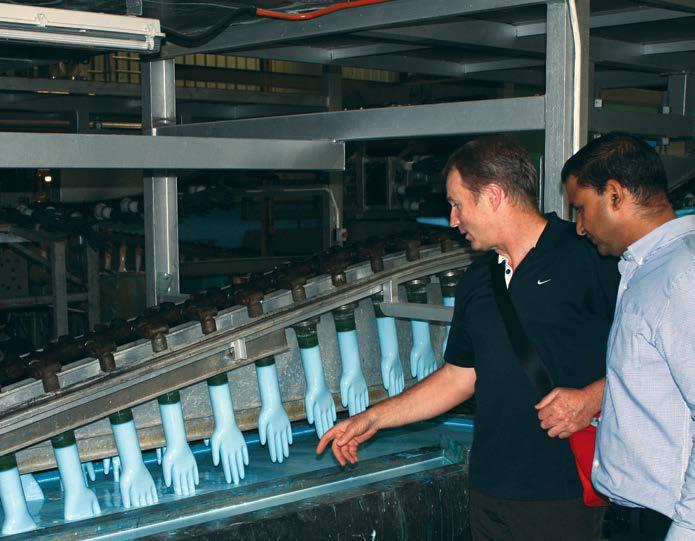
The lack of compliance standards, commonly referred to as the “Glove Safety Gap”, is an issue that Eagle Protect felt necessary to address head-on. Knowing that the general public and glove users alike expect disposable gloves to prevent cross-contamination, not be implicated in, the company responded with direct action. Eagle Protect adheres to a strict supplier code of conduct and has B Corp certification, which encourages independent third-party auditing and follows a singlesource of manufacturing model. Through a recent partnership with Rfider, Eagle also added supply chain traceability for its product lines. Eagle Protect is on a mission to provide Kiwis and those across the globe with access to high-quality disposable gloves which are safe, durable and free of contamination.
Eagle Protect’s five-year microbial analysis study revealed the widespread risk of contamination within the disposable glove industry, with independent lab testing uncovering that 50% of new and unused gloves analysed had human faecal indicators. To combat these issues Eagle Protect is establishing the global industry standard for compliance, providing a method for ensuring that vulnerable industries, including food handling and healthcare sectors, have access to clean gloves, free of harmful toxins and contaminants.
“In the effort to mitigate glove contamination risks to multiple industries and glove users we’ve spent the last few years refining our Delta Zero verification process,” said Steve Ardagh, CEO and co-founder of Eagle Protect. “It’s a proprietary, multi-layered, fivepoint testing process that ensures Eagle gloves strictly adhere to the industry’s highest level of safety and performance.”
New Zealand relies on the United States Food and Drug Administration (FDA) regulations for the quality assurance of food handling gloves. However, there are significant limitations within the
Changes to Pāmu governance roles
Pāmu has announced two new appointments to governance roles at the organisation. Libby Tosswill will join Pāmu as an associate director and observer on its board. The state-owned enterprise has also appointed Jillian Laing to the board of Spring Sheep Milk Co, a public-private partnership company jointly owned by Pāmu and SLC Group.
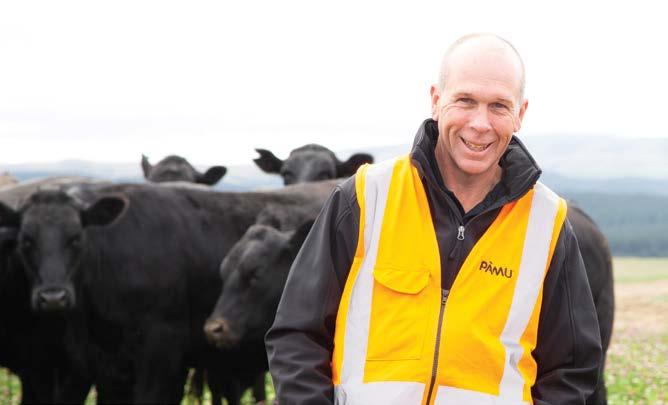
Pāmu CEO Mark Leslie says Jillian brings expertise in marketing and sales, a global lens and connections, and commerciality in the demand generation space.
“Jillian is an international food marketer. She has been the CEO of a tech start-up and had extensive experience in global sales and marketing while she was at Fonterra. Now in her role with the World Macadamia Organisation, she is across consumer trends and customer insights globally. Jillian brings a new perspective, and we are excited to welcome her into the fold,” he says.
Libby joined Pāmu in time for its February board and sub-
FDA’s current food glove compliance requirements. The FDA’s own code for imported gloves (FDA Title 21, Part 177) does not specifically require them to be intact, clean, or sanitary, nor are they subject to routine testing upon arrival.
Furthermore, the current testing and reporting methods for disposable gloves imported into the United States (and countries that rely on those standards such as New Zealand) carry no expiry date, making it difficult to draw comparisons against previous testing. This loophole opens the door for manufacturers to alter raw materials, composition, and even their own quality assurance standards –greatly enhancing the possibility of mislabelled and fraudulent products from unscrupulous industry suppliers.
Now featured prominently on a growing range of the company’s nitrile glove packaging, Eagle Protect’s Delta Zero badge certifies that their products have undergone third-party laboratory testing, passing a stringent set of standards that guarantees adherence to the highest level of consistency, safety, and performance. The certification includes a five-factor safety and performance verification process, including third-party lab testing to ensure quality raw materials, and the absence of unsafe chemicals, toxins, and microbial contaminants that pose health and safety risks to glove wearers and to food and medical industries.
committee meetings. The team farewelled Bridget Giesen who has been in the associate director role for the past 12 months, at its March meeting in Dunedin this week.
Food New Zealand 8 Newsbites
Pāmu CEO Mark Leslie
Steve Ardagh, CEO and co-founder of Eagle Protect, views a glove production line
Digital CIP optimization for membrane filtration
– GEA halves water and power consumption for CIP in membrane filtration in the food industry.
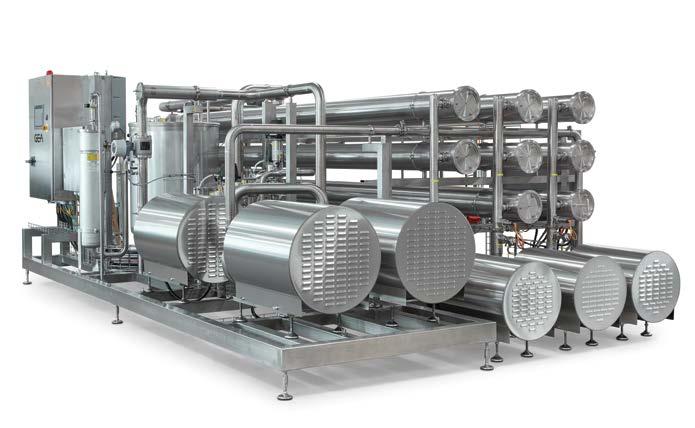
GEA reduces water and power consumption during the cleaning of membrane filtration plants by up to 50 percent with two new digital tools. The software duo, GEA Smart Filtration CIP and GEA Smart Filtration Flush, automatically intervene in CIP (cleaning-inplace) processes, pulsing the pumps and flushing the membranes individually and according to real-time water quality.
Membrane filtration is primarily used in food manufacturing –including new foods – and in dairy processing. Common product examples include dairy protein and fish collagen isolates. Until now, cleaning this equipment was energy- and water-intensive, requiring three or four individual cleaning steps with different chemical cleaning agents to be pumped and circulated throughout the equipment for a specified amount of time before rinsing it out with water.
In contrast, GEA Smart Filtration Flush uses sensors to constantly measure the permeate quality of the water during the flushing process, reducing the freshwater required. Setting blanket rinsing intervals and water quantities in advance are no longer needed as the software stops the process as soon as the necessary hygiene level is reached, and the cleaning agents are discharged. Depending on the type and size of the plant and the water properties, operators can reduce their freshwater requirements by up to 50%.
“A typical dairy whey protein concentration process needs two to four filtration plants connected in a series. This set up can require more than 100,000 litres of water, per cleaning cycle,” explains Nils Mørk,
With two new digital tools GEA Smart Filtration CIP and GEA Smart Filtration Flush, GEA reduces water and electricity consumption by up to 50% when cleaning membrane filtration plants. Image: GEA
R&D Engineer for membrane filtration at GEA. “Today, we know from plant tests that we can save well up to 50,000 litres of water per cleaning in such large plants and 500 to 700 litres per CIP in small productions.”
The second software module, GEA Smart Filtration CIP, is a software module that regulates cleaning efficiency. It causes the pumps to operate in a pulsating manner as opposed to running continuously. As a result, the pumps consume up to 50% less energy during the CIP process. Traditionally, the best results were achieved by cleaning with high shear forces (e.g., mechanical washing with a strong rinse flow). This approach meant the maximum allowed pressure drop across the membranes was applied during the CIP process – which entails much higher energy consumption. GEA Smart Filtration CIP breaks with this inefficient method, without losing efficacy.

Newsbites
Oils and Fats News
Laurence Eyres FNZIFST
A regular roundup of news and opinion from the Oils and Fats Group of the New Zealand Institute of Chemistry.
Selina Wang on Avocado standards
We are all looking forward to the visit of Professor Selina Wang who has done major work on both avocado oil and olive oil. She has significant papers in the field of detecting and stopping adulteration of these oils.
Her very relevant quote at the end of her published paper, “In order to establish fair standards, it is also imperative to know how these parameters change with varietal, harvest time, and processing conditions to determine the appropriate ranges for avocado oil, ensuring authentic products are not flagged incorrectly. This study gives a timely overview of the quality and authenticity of the avocado oils available on the US market and a call to action for the standards establishment”
Wang, S. and Greene, H. Food Control, (2020), 116,107328
There is also a particularly good review of the proposed Codex standard. Comment at the end of the Article “Samples overall fit the current proposed CODEX standards for fatty acid profile. Fruit growing region and harvest time were found to have the biggest impact on fatty acid profile and will be important to consider in the future as more regions become avocado oil producers.”
Evaluation of proposed CODEX purity standards for avocado oil. (Wang, S. Food Control, 143 (2023),109277.)
Other conferences and meetings
The Annual NZIFST Conference is being planned to take place in Dunedin at the end of June. We believe the programme is coming together nicely so keep an eye on newsletters and announcements for updates on speakers and registration. MORE HERE
Later in the year we have the AAOCS Conference which this time will be held in Newcastle in New South Wales. It's early days so no details of the programme are out yet. Anyone interested should contact Doctor Matt Miller at the Cawthron institute. Matt.Miller@ cawthron org nz
Linseed oil and driers
Many years ago, this author, together with a friend, Stuart Gray from Fletchers, looked at mixtures of refined linseed oil with naphthenate driers. The author used these mixtures on many a fence and pieces of outdoor furniture.
We would like to know if anyone has done work in this space to optimise the type of napthenates used, their concentration and the state of the linseed (flaxseed) oil used in terms of refining extent. Please email eyresy@gmail.com
Oleogels, bigels and liposomes
The Oils and fats group will be sponsoring a 4th. year student project at Massey University looking at the topic of oleo gels (organogels). More details will be available in the next few months, and we hope to review some of the results at the above mentioned AAOCS conference. If anyone has practical knowledge of commercial gels for the food industry, please let us know.
Recent published papers
–Preferences for dietary oils and fats in cooking and food preparation methods: a cross-sectional analysis of Australian adults.
The aim of this study was to investigate the use of dietary oils and fats in cooking and food preparation in Australia. Adults living in Australia completed a cross-sectional online survey outlining their current household oil and fat use from July to December 2021. The survey was disseminated via social media platforms and included questions about the types of dietary oils and fats used for different cooking methods and the perceived motivators for choosing the main household oil. A total of 1248 participants responded to the survey. Participants were mostly female (91·6%) aged between 25 and 44 years (56·7%). The majority of participants (84·5%) reported using some form of olive oil as their main source of oil for cooking and food preparation. Almost two-thirds of the sample (65·4%) reported using extra virgin olive oil (EVOO), mainly in raw food preparation (71·5%) or savoury baking and roasting (58%). Fewer households reported using rice bran oil (4·6%), canola oil (4·3%) and vegetable oil (1·8%). Almost half of all participants (49·6%) identified perceived health benefits as the primary motivating factor for their main choice of oil, followed by sensory preference (46·7%), versatility (10·2%) and convenience (8·8%). Australian adults frequently use olive oil, specifically EVOO, as the main oil for cooking and food preparation in the household.
It is hope that the Australasian standard for olive oil helped to firm up these preferences.
Br J Nutr, 2022 Dec 2;1-11. doi:
10.1017/S0007114522003798
It is also interesting to read the Claudia Guillaume article on comparing oxidative stability on frying of various oils. Reasonable predictors of how an oil will perform when heated have been oxidative stability, secondary products of oxidation, and total level of PUFAs. EVOO has been demonstrated to be the most stable oil when heated, followed closely by coconut oil and other virgin oils such as avocado and high oleic acid seed oils.
De Alzaa F, Guillaume C* and Ravetti L Modern Olives Laboratory Services, Australia, Acta Scientific Nutritional Health Volume 2, Issue 6 June 2018.
Food New Zealand 10 Oils & Fats
Potential of Omega-3 Supplementation for Coronavirus Disease control (COVID-19): A Scoping Review
Nanda Nursyifa Fadiyah,Int J Gen Med. 2022; 15: 3915–3922. Published online 2022 Apr 11. doi: 10.2147/IJGM.S357460
COVID-19 can cause fever, cough, headache, and shortness of breath but patients with co-morbidities can experience severe effects and death. An action is needed to treat this condition in COVID-19 patients. omega-3 fatty acids may be one possibility associated with COVID-19 prevention, management, and treatment. Therefore, this review aimed to identify the existing studies on potency of omega-3 fatty acid supplementation on COVID-19. The studies selected were the full-text, non-review ones which focused on the omega-3 fatty acid intervention in COVID-19 with COVID-19 patients and people affected by COVID-19 as their subjects and clinical manifestations or the results of supporting examinations as their outcomes. No quality assessment was performed and of the 211, there were 4 studies selected for this review. They showed that severe COVID-19 patients have low levels of omega-3 in their blood. Omega-3 was considered to reduce the risk of SARS-CoV-infection and the duration of symptoms, overcome the renal and respiratory dysfunction, and increase survival rates in COVID-19 patients. Omega-3 fatty acid supplementations were thought to have a potential effect in preventing and treating COVID-19. This can be a reference for further research about omega-3 fatty acid supplementation and COVID-19.
Association between blood N-3 fatty acid levels and the risk of coronavirus disease 2019 in the UK Biobank. by William S. Harris, Nathan L. Tintle, Swaminathan Perinkulam Sathyanarayanan and Jason Westra, 28 February 2023, DOI: 10.1016/j.ajcnut.2022.11.011.
Bioactive omega-3 fatty acids are associated with reduced risk and severity of SARS-CoV-2 infection. by Philip C. Calder, 28 February 2023, American Journal of Clinical Nutrition
Codex Draft standard for microbial omega-3 oils
Schizochytrium oil is derived from Schizochytrium species (such as Schizochytrium linacinum) of the genus Schizochytrium (family Traustochytreaceae). Due to taxonomical name changes made to the genus Schizochytrium, the following genus and species are considered to be included: Schizochytrium aggregatum, Aurantiochytrium limacinum, Aurantiochytrium mangrovei, Oblongichytrium minutum, Oblongichytrium octosporum.
Nannochloropsis oil is derived from the species Nannochloropsis xyx, of the genus Nannochloropsis (family Eustigmatales).
• Peroxide value ≤ 5 milliequivalent of active oxygen/kg oil
• Anisidine value ≤ 20
• Total oxidation number (TOTOX ≤ 26
My comment would be that these Totox values the oil could still taste
terrible. Codex standards seem to be so wide you can drive a bus through.
Owen Catchpole, Fellow of the Royal Society
The man behind the development of “supercritical extraction”, the process that has led to some worldleading Kiwi food, beverage and nutraceutical products has joined an elite list of revered New Zealand scientists.
Owen Catchpole was recently made a Fellow of the Royal Society, an honour that recognises distinction in research, scholarship and knowledge advancement.
Dr Catchpole is the first scientist from Callaghan Innovation to be made a Fellow in its 10-year history, an achievement he says recognises the commitment and investment into research and development by Callaghan Innovation and its predecessor organisations. He has a background in chemical engineering and pioneered the establishment of “supercritical extraction” in New Zealand – now used extensively to make products like green shell mussel oils, hop extracts and hemp/cannabis extracts. Based in Auckland, he began his career at the former Department of Scientific and Industrial Research where he established R&D capability in supercritical extraction. Supercritical extraction is a process that most commonly uses carbon dioxide at high pressure to extract natural products from biological materials which can then be used to make high-value products such as dietary supplements, functional foods, flavours and fragrances.
“It was pretty much a blank canvas at the DSIR. One of the very first projects I was involved with was trying to make low cholesterol meat products and cholesterol-free butter because at the time cholesterol was seen as public health enemy number one,” Dr Catchpole says. Today there is a large extraction plant in Nelson making hop extracts for beer and producing Lyprinol from Green Shell mussels – an extremely high-value product costing about $20 per gram – along with other smaller plants making marine extracts, cannabinoids, pyrethrum and other products.
Dr Catchpole says being made a Fellow of the Royal Society is an endorsement of the teams and people he’s worked with over his long career. However, he is also pleased the honour recognises applied science and engineers – a career he says must be accorded more status if New Zealand is to become a hi-tech global competitor.

April / May 2023 11
Oils & Fats
New Royal Society Fellow, Owen Catchpole
Upholding our food safety system in an emergency
Presented by Vincent Arbuckle, Deputy Director General, New Zealand Food Safety
Following the huge challenges recently faced by our food sector due to severe flooding in the Northland, Auckland, Coromandel and Bay of Plenty regions, and the devastation wreaked by Cyclone Gabrielle in parts of the North Island (particularly Hawke’s Bay and Tairāwhiti),I have been reflecting on the importance of our food safety system during adverse events. Food and food-related products make up 80% of our total export revenue.
New Zealand Food Safety (NZFS) is the guardian of New Zealand's food basket; and our main objective is that food produced in New Zealand is suitable and safe to eat. Ensuring the ongoing supply of safe food during an emergency is important for continuity and the wellbeing of the country. I want to acknowledge the growers, producers, and food businesses in the affected regions and their enormous efforts to respond in the immediate aftermath, and their task ahead. I would like to assure you that we will continue to support the food industry as we move from focusing on the immediate response to long-term recovery.

Our response
Our NZFS response is ongoing, and we still have staff on the ground working with Civil Defence, Iwi, industry organisations and local councils to assist in cyclone and flood-affected areas. During the immediate response, staff worked to coordinate NZFS support and provide practical assistance, from visiting premises to assess and advise, to getting essential information to growers and producers. In Wellington our teams have been producing resources, answering inquiries, and supporting businesses and organisations as they navigate these large-scale events.
A total of $51 million was made available to growers (as well as farmers and rural Māori landowners) to help kickstart recovery. There is a range of relief support funding available, such as the Mayoral Relief Fund, IRD tax relief for emergency events and recovery funds from industry groups. Government grants for recovery support for affected businesses are being administered through local partners and there is a separate fund for the fishing and aquaculture industries.
Operating after a civil emergency or power failure
As businesses get up and running again following a major event, it is vital to ensure food is safe. NZFS has produced specific guidance for cafés, restaurants, and food retailers; and for manufacturers operating under Risk Management Procedures and Food Safety
Programmes for reopening after a civil emergency or power failure. The advice is tailored for each sector. However both sets of guidance outline the importance of checking that premises are structurally sound and thoroughly cleaned after the event, that potable water is available, toilets and personnel hygiene facilities are working, and key staff know what to do – among other essential steps. Full checklists are available on the MPI website under Resources for Adverse Events. Our food safety system must keep operating during and after a civil emergency, and verifications should continue where possible. Remote verifications can be offered by a recognised remote verifier when a business has a history of good compliance and they are unable to complete an on-site verification, and businesses can also temporarily suspend their registration. You will have seen that the Severe Weather Emergency Legislation Act commenced on 21 March 2023. This omnibus act includes temporary amendments to the Food Act 2014 and the Food Regulations 2015 to assist food businesses and Territorial Authorities in response to severe weather events that occurred in January and February 2023. The amendments allow food businesses in impacted areas and whose registration expired, or expires, between 8 January 2023 and 16 May 2023 an extended period to renew their registration. This amendment is provided so that food businesses do not incur the burden and cost of applying for a new registration while recovering from these events. You can find more information about this on our website.
NZFS released detailed guidance for harvesting flood-affected produce for human consumption, specifically for commercial produce growers, outlining sources of contamination, steps for risk assessment and managing food safety risk, and advice around testing. Again, this is available on our website and is essential reading for any grower or producer to put plans in place for future adverse events.
A focus on wellbeing
The New Zealand Food and Grocery Council (NZFGC), supported by NZFS, recently ran a two-part webinar with prominent clinical psychologist Jacqui Maguire, focusing on mental wellbeing for food business leaders. The webinars covered looking after yourself and your loved ones so you can lead well during tough times, and leading others during the response and recovery phases. They are available to view on the NZFGC website. Responding to and recovering from a crisis is a long process, and I found Jacqui’s insights to be useful and practical. I encourage you to find time to watch the webinars to get some valuable takeaways for your mental health and on leading your people through adversity.
Food New Zealand 12 Food Safety
Sliding on
We studied slime for 19 years!
Professor John D Brooks FNZIFST
John Brooks' view of the food world through the lens of a microbiologist.

I was tempted to write this month about food safety after flooding events but realised that most people reading this column would already know about the hazards of contamination and spoilage. If you require some support for advice you may have given to flood victims, have a look at this post from 15th February 2023 HERE. This column is on the subject of biofilms in the food industry. It might be said that the subject has been done to death, but it is clear that biofilms are still causing problems and researchers are looking for novel ways to control them.
The term ‘biofilm’ was coined by Bill Costerton in 1978 and is defined as an aggregation of microbial cells and their extracellular polymeric substances actively attaching to and growing on a solid-liquid interface. Not only do the cells multiply within the film, but they also can be sloughed off the surface into any liquid flowing over the film. The film may appear to be slime on the surface of equipment, or food such as bacon.

For a long time, it was thought that thermophilic spore-forming bacilli, such as Bacillus stearothermophilus (now called Geobacillus stearothermophilus) were growing in the milk as it flowed through the equipment. Some microbiologists had doubts about this as the microbiological quality of the milk entering the plant was high and the residence time in the plant was too short. Nevertheless, around the world, it was recognised that milk powder could contain high levels of thermophilic spores. I remember sitting in a meeting listening to the arguments and doing a calculation on the back of an envelope, taking into account the growth rate of thermophiles and the surface area inside the separators and evaporators and coming to the conclusion that growth in the liquid milk could not explain the levels in the finished powder. The only other explanation was that the bacteria were growing in biofilms on the surface of the equipment. My PhD student and I received funding from the NZ Dairy Board to investigate biofilm formation within dairy plant and we were able to collaborate with other researchers and post-doctoral fellows in New Zealand, most notably Dr Phil Bremer who already had experience in biofilm research.
One of the characteristics of bacterial biofilms is that the cells are somewhat protected from heat and cleaning solutions, so, unless the equipment is cleaned very thoroughly, the film is able to reinoculate the plant during the next run.
It became very important to understand the properties of the stainless steel in contact with the milk and the properties of the bacterial cell surface that influenced the initial adhesion of the cells so that steps might be taken to limit the development of biofilms. These procedures included “intelligent plant operation” such as modifying the separation temperature, chemical surface modification of the stainless steel, reduction of surface roughness to limit attachment, and cleaning protocols to ensure removal of biofilms. Disrupting the cell growth pattern has also been investigated by cycling the temperature in plate heat exchangers and evaporators. This is a fairly
Biofilm of Streptococcus on 316 stainless steel drastic intervention but has been shown to reduce biofilm growth. Planktonic cells also respond to quorum-sensing molecules released by biofilms, so this too became an area for research. It should be noted that similar studies were initiated in New Zealand research teams, as well as overseas. It is clear that bacterial cell attachment to surfaces is a very complicated process, affected by other molecules attracted to the surface, the surface charge of the substrate, cell surface charge and surface proteins, hydrophobicity and pH of the suspending medium (1).
Of course, biofilms affect other food processes besides the manufacture of milk powder. One complication of studying biofilm growth in the laboratory is that the films usually consist of a single species, whereas in food and water processing plants, the films are often multi-species and the nature of the initial colonisers may influence the attachment of further species. Thus, Campylobacter jejuni cells in biofilms are more hydrophobic than those grown in planktonic mode, while Enterococcus faecium readily forms biofilms on stainless steel and may attract C. jejuni to attach to the film and the lethal effect of heat on C. jejuni is reduced. Biofilms can form on leafy vegetables. We now know that the biofilm matrix can significantly increase the settlement of marine larvae, Perna canaliculus, which is of importance in commercial shellfish farming.
Examples of current biofilm research topics:
• Influence of culture conditions on biofilm formation by Escherichia coli O157:H7
• Development and control of bacterial biofilms on dairy processing membranes.
(1) Palmer, J., Flint, S., & Brooks, JD. (2007) Bacterial cell attachment, the beginning of a biofilm. DOI 10.1007/s10295-007-0234-4
April / May 2023 13 Sliding On
Overview: Ingredients
Food New Zealand’s ingredient finder for all applications
ADM
At ADM we unlock the power of nature to provide access to nutrition worldwide.
We offer industry-advancing innovations and a complete portfolio of ingredients and solutions to meet any taste, alongside an unwavering commitment to sustainability.
Get an edge with our unparalleled portfolio of flavours, extracts, colours and specialty ingredients, combined with technical ingenuity for future-forward innovation across all food, beverage and health and wellness applications. Our pantry of solutions is ready, with tried-andtrue ingredients including industry-leading sweetening solutions, a variety of plant-based proteins, functional health ingredients such as prebiotic fibre, pro-biotics, post-biotics and more.
We know ingredients inside and out. Our extensive portfolio of ingredients is just one measure of our commitment to provide the best possible solutions for consumer-winning applications.
We maintain a consumer-centric view of emerging trends, with deep insights into consumer behaviour, and continue to expand our portfolio with new on-trend ingredients and market-leading technical capabilities. Our daily ambition is to ensure we find the right solution to give customers an edge in solving the nutritional challenges of today and tomorrow.
We love nothing more than putting on our thinking caps to help solve customers’ most daunting challenges using our entire pantry of
ingredient solutions – no matter what your application or functional requirements.
ADM ANZ (Australia and New Zealand) have offices in both Australia and New Zealand, and welcome our customers to the Customer Innovation Centre in Sydney, which offers a collaborative and interactive approach to successful innovation.

Learn more at www.adm.com
Consistency is Key: How prebiotics can improve long-term gut health
Christian Philippsen, Managing Director, BENEO Asia Pacific
Lately, more consumers in Asia Pacific have been making the shift towards healthier lifestyles, a development that is likely to continue given the anticipated rise in the region’s ageing population. New Zealand, in particular, is expected to have around 1 million individuals aged 65 and above by 2028, which equates to one fifth of the population.
A rising ageing population brings with it a slew of health-related issues. For instance, as we age, the stability of our gut microbiota composition reduces which increases the occurrence of potentially harmful bacteria groups. This weakens a person’s inner defence system, as 70% of it is located in the gut. Therefore, consumers are increasingly taking proactive measures to improve their digestive health.
This is where prebiotic fibres can help. When the fermentation of
Food New Zealand 14
Ingredients
fibres allows a selective increase of beneficial bacteria and results in a health benefit, they are classified as prebiotics. Gut friendly foods such as prebiotics can be supportive in nourishing the gut microbiota as a person gets older. These include BENEO’s chicory root fibres, Orafti® Inulin and Oligofructose, which are the only scientifically proven plant-based prebiotics. The beneficial effects of these fibres have been demonstrated in more than 150 human intervention studies, and were recently also confirmed by a systematic review with metaanalyses, considered the strongest methodology in the hierarchy of scientific evidence.

Additionally, these non-GMO prebiotic fibres can be easily incorporated into recipes to increase fibre content, reduce sugar or fat (e.g., in bakery or dairy products), all while maintaining a mild and pleasant taste as well as texture.
As diet influences metabolism during all stages of life, consistency is key. Good dietary habits can have positive effects on the gut microbiota to support a healthy gut later in life. Using prebiotics, food manufacturers can innovate and offer healthier products for all to enjoy.

Ingredients
Ingredients
Caldic – inspiring solutions
Caldic offer inspiring solutions in food science and specialty chemicals across 40 countries. We identify key market trends to source unique ingredients from around the world, then take care to understand our customers’ needs in order to offer the optimal solution. In New Zealand, our food sales and technical team all have food technology backgrounds, so are well placed to support your next project. Examples of the solutions we offer include:
• Functional fibres for fat replacement, emulsification and thickening in a range of clean label applications.
• Plant based proteins for nutrition, water and oil binding, emulsification, foaming/aeration, and gelation. Organic, textured, and clear/colourless solutions also available.
• Natural flavours, flavour modifiers and plant-based flavours from Kerry, produced in Australia.
• Natural colours and colouring foodstuffs from the world’s leading supplier Oterra (formerly Chr Hansen)

• Plant based portfolio for texture, flavour, shelf-life extension, and fat replacement.
• Natural antimicrobial solutions.
• Antioxidant and Vitamin and mineral premixes produced at our North American site.
• Probiotics and Prebiotic solutions for optimal gut health.
• Nutritional extracts with clinical research to improve immunity, gut health, oral health, or specific conditions.
• Savoury and bakery premixes to suit customers’ applications.
• Enzymes, emulsifiers, hydrocolloids, starches, humectants, fat powders, sweeteners.
Our sister company at Clark products can also support with cleaning and sanitisation solutions produced in Napier. They currently supply many of New Zealand’s leading food and beverage manufacturers. For your next development, technical or supply chain challenge please give Caldic a call, we would love to partner with you!
Food New Zealand 16
Growing colours with EXBERRY
Plant-based colours for the modern market
Colour is key to making a positive first impression in food and drink. The right shade helps products to stand out on the shelf and sets expectations on quality. Research shows that colours’ hue and intensity can even influence flavour perception.
Visual impact is crucial, but today’s shoppers also like their food and drink to contain ingredients they know and trust. FMCG Gurus’ research shows that, in the Asia-Pacific region, two-thirds of consumers say they seek out products containing recognisable ingredients.
GNT’s EXBERRY® Colouring Foods can provide the solution. These plant-based concentrates are made from edible fruit, vegetables and plants using traditional, physical production methods such as chopping and boiling. This means they can be eaten by the spoonful at any stage of the manufacturing process. Crucially, they also qualify
for clean and clear label declarations. In New Zealand and Australia, a red shade might be described on ingredient lists as “colouring food (concentrate of carrot and blackcurrant)” or simply “concentrates (carrot and blackcurrant).”

EXBERRY® colours can deliver vibrant shades from across the whole rainbow and are suitable for practically any food and drink application. We also have a vertically integrated supply chain to grow our fruits, vegetables, and plants. This allows us to maintain the quality of our products as well as guaranteeing year-round availability.
Making the switch is easy. We can provide support every step of the way to help you achieve your goals, from concept innovation to colour matching to regulatory matters.
Based on the concept of colouring food with food, EXBERRY® delivers maximum consumer acceptance – providing a futureproof solution in a rapidly evolving marketplace.

April / May 2023 17
Ingredients
CONFIXX® inspires breakthroughs in fortified gummy production
Gelita, the leading manufacturer of collagen peptides and tailored gelatines, has launched a fast-setting gelatine that enables a breakthrough in fortified gummy production. Branded CONFIXX®, the new gelatine allows for the starch-free production of gummies with a sensorial profile that has previously only been attainable with a starch-based manufacturing process. This opens up opportunities for manufacturers of these on-trend supplements to work with different active ingredients, simplify the production process and make considerable cost savings – all the while confident in the knowledge that there will be no compromise on all-important texture. The popularity of fortified gummies has exploded in recent years as consumers eschew conventional pill and capsule-based supplement

Welcome to the Future of Food & Nutrition with IMCD
Understanding trends is the first step to successful product development. What’s trending informs and inspires innovation –and shows the way to potential business opportunities. In our annual trends commentary, our global team of food and nutrition experts identify the market dynamics that will shape the future of the industry in the year ahead, and beyond.
Two major drivers are expected to shape consumer behaviour going forward. The health of the planet is the number one concern for consumers around the world. The pandemic, coupled with the increasing digitalisation of our lives has prompted a greater consumer awareness of the environment and the health of the planet.
The second major driver is inflation. Over the past year, inflation has impacted consumers at every level. Food prices have been
formats in favour of soft and chewy ‘candyceuticals’. According to data from Innova Market Insights, gummy supplements accounted for 9.4% of global supplement launches in 2021 – an increase of 70% since 2017, and between 2020 to 2021 alone, the number of gummy supplement launches globally rocketed by 81%.(Innovadatabase: Innova New Products Launches, last accessed: 05.01.2023)
Gelita is an innovation leader for gelatine and collagen proteins. Coordinated from the headquarters in Eberbach, Germany, Gelita provides customers around the world with products of the highest standard, comprehensive technical expertise, and sophisticated solutions. More than 20 sites and a global expert network ensure that state-of-the-art know-how is always available for customers.
rising at record rates in line with increasing energy and transport costs. Four-fifths (83%) of consumers say they have noticed grocery price increases at the supermarket. Accordingly, over half of all consumers (55%) say they have changed their shopping behaviour in response to food price inflation, something that will shape trends for the upcoming year.
Download the full Trends Report to learn more about these four megatrends and see how IMCD supports food innovators with our wide portfolio of ingredients and technical expertise. From labelfriendly to sustainable solutions, we work in close collaboration with our partners to develop formulations that meet and exceed consumers expectations across the globe. Our global team of technical, sales, distribution and marketing experts can help you find the right opportunities to innovate, and the best way for your business to grow. Taste the future of food and nutrition with IMCD. The trends report is HERE
Food New Zealand 18 Ingredients
Hibiscus Solutions
–Delivering success for New Zealand’s quality food manufacturers
As an established business with over 25 years of serving New Zealand manufacturers, the team at Hibiscus Solutions have proven experience in the co-creation of quality foods for the New Zealand market. As a trusted partner in complete product development services, Hibiscus Solutions has locally-based industry specialists to support you in ingredient and process applications, nutrition, procurement, quality assurance, supply chain development and more.
Hibiscus Solution’s Food and Nutrition specialists work closely with their customers to provide tailor-made solutions for their specific needs. If you are looking to give your brand a unique identity, sourcing the right combination of high performance ingredients to fit

into your production line doesn’t need to be challenging if you have the Hibiscus Solutions team beside you.
Whether you are looking to scale up a new idea, improve the performance of a product, review your ingredients pricing or something else related to a food product, their team of qualified and industry trained professionals work in an open and collaborative way with clients and principal supply partners to provide the best possible solutions.
And with large MPI approved warehousing capacity, a dedicated food storage site, a chilled facility for storage of goods below warehouse temperature and ISO 22000 certification, Hibiscus Solutions is perfectly positioned to help you scale up your business.
Hibiscus Solutions is a proudly New Zealand owned and operated business headquartered in Auckland with teams in Wellington and Christchurch.
April / May 2023 19 Ingredients
Sensient Technologies
We bring life to products
Sensient Technologies is a leading global manufacturer and supplier of natural extracts, natural colours, and natural flavours. Sensient’s innovative technologies create fresh, unique solutions tailored to meet the needs of today’s educated consumers.

Our Auckland factory has been supporting the New Zealand food industry since 1984. Sensient’s development and manufacturing team take international trends and technologies from our global resources and transform them into local products, concepts and innovations for our Kiwi customers.
The New Zealand business has a strong technical team and supports R&D development for our New Zealand customers and for Sensient’s Asia Pacific region. With robust local technical knowledge paired with marketing expertise, the New Zealand team has developed many solutions for customers, meeting their needs in sugar and salt reduction, plant based food and beverages, natural extracts, colouring foodstuffs, natural colours and tailored flavour requirements in both liquid and powder formats.

Sensient New Zealand manufactures most of our products right here in Auckland, enabling secure supply chains for our customers. New Zealand manufacture also enables us to supply with short lead times, flexibility in providing different pack sizes and small minimum order quantities.
If there’s anything we’re more passionate about than colours, flavours and ingredients, it's partnership. We are the experts in science, art and innovation of taste. We are problem solvers but we recognise that Sensient would be nothing without its clients and collaborators. Together, the most challenging product puzzles can be solved, making products that are delicious, craveable, and truly inspired. We want to champion your business and your success by being a partner who is with you every step of the way.
Food New Zealand 20
Ingredients
Brenntag's specialty solutions for your food innovation
In an increasingly competitive consumer market, innovation is essential. By partnering with innovative suppliers, leading the way in research and development, Brenntag is your partner of choice in Food and Beverages innovation. Whether you are looking for functional health ingredients, flavours, enzymes, hydrocolloids, emulsifiers, stabilisers or sweeteners. Brenntag Food and Nutrition supports your every need, says Melanie Salberg, Regional Director, Australia and New Zealand.
Through our acquisition of Ravenswood Ingredients, Brenntag ANZ adds blending capabilities and a deep understanding of the dairy and ice cream market for further expansion into the Australian and New Zealand Market. We warmly welcome the Ravenswood team into the Brenntag Family.
Our team of experts work with our customers to choose the right
ingredients for their products, delivering the best performance in a product’s taste, texture, nutritional composition and shelf life, that is, tailor-made solutions for each customer's unique and specific needs. "No matter how small or large our partner's needs are, we provide innovative and smart approaches for food products that appeal to all senses. Thereby, we put your requirements at the heart of everything we do and can help to increase efficiency along your supply chain. We deliver on Brenntag's safety and sustainability promise and reduce your compliance burdens with support from our regulatory experts,” says Salberg.
We do all of this while creating attractive products that succeed. We are constantly looking for healthier options and nutritious formulations that satisfy every appetite. Brenntag Food and Nutrition brings together everything from creation excellence to exceptional distribution capabilities. We are your specialist partner for Food and Beverages ingredients and innovation.
Tastes as good as it looks – with Invita’s range and expertise
Healthier and more joyful eating experiences are only made possible by truly understanding the science and emotion behind food. Consumers are at the heart of everything we do. Driven by our purpose to create positive emotions and increase wellbeing with every eating experience to make a greater impact for good.

Firmenich’s research of the ANZ market gives us an in-depth understanding of the consumer psyche, of their consumption habits and aspirations. With these insights, we seek to help you innovate in the right direction with contemporary or traditional flavours and breakthrough integrated solutions that will enhance health, wellness and happiness for your consumers.
Colour is key to making a positive first impression in food and drink. The right shade helps products to stand out on the shelf and sets expectations on quality.
Made from fruit, vegetables and edible plants, EXBERRY®
Colouring Foods are available in an array of shades perfectly complementing flavours in bakery, beverage, dairy, savoury products and more. With consumers more open than ever to new food and drink experiences, the possibilities for plant-based colours are endless.
Whether used on their own or in combination, Invita’s portfolio of flavours, colours and specialty ingredients offers you a toolbox of solutions: flavours and sweeteners | taste modulation and masking tools | colouring foods | cocoa products | yeast extracts | vitamin and mineral premixes | botanical extracts | probiotics | prebiotics | rice ingredients | colour solutions | malt extracts | caramels | fruit and vegetable powders | emulsifiers and texturing systems | specialty fats.
Invita is a New Zealand-owned company with global reach and exclusive distribution arrangements, welcoming the opportunity to share our market intelligence and ingredient innovations, ensuring you are always at the forefront of industry developments. Invita. Global Reach, Local Delivery.

Ingredients
Ingredients
Tate and Lyle
Our purpose is transforming lives through the science of food. Today, demand for more nutritious food and the desire to live healthier lifestyles are greater than ever. Through our deep scientific knowledge, passion for innovation and leading expertise in sweetening, mouthfeel, and fortification, we create solutions that make food and drink healthier and tastier. Working with our customers, we reduce calories, sugar, and fat in their products, and add fibre, to make people’s favourite foods even better. Every day, across the world, millions of people enjoy products containing our solutions. Our extensive knowledge of ingredients enables us to tailor our systems to your products. We're focused on responding to the latest consumer trends and constantly changing needs of today’s consumers. Our development teams are dedicated to responding to global trends such as:
• Plant-based
• Transparency
• Sugar reduction
• Gut health
• Convenience
• Better-for-you snacking
We focus on these key areas of expertise, leading the way across these consumer trends and building on our success to drive growth for our own business, our customers' businesses, and our stakeholders. Our portfolio includes modified and clean label starches, soluble fibres, nutritive and non-nutritive sweeteners, crystalline fructose, locust bean gum plus customised functional stabiliser systems. Our brands include CLARIA® Clean label starches, Sweet Green Fields Stevia extracts, SPLENDA® Sucralose, PUREFRUIT™ Monk Fruit Extract, ERYTESSE™ Erythritol, KRYSTAR® Fructose, PROMITOR® Soluble Corn Fibre, STA-LITE® Polydextrose, ARTESA® Functional Chickpea Flour, HAMULSION® and HAMULTOP® Stabiliser Systems. Distributors for Sunett® Acesulfame K and Nutrinova Sorbates. SPLENDA® is a trademark of Heartland Consumer Products LLC. Sunett® is a trademark of Celanese Corporation. We have the experience, expertise, facilities, and infrastructure to help you meet your challenges and maintain your competitive edge.

Food New Zealand 22
Sherratt Ingredients
– Providing local product development, ingredients, and bespoke blends.
JC Sherratt Ingredients Ltd is a New Zealand owned and operated company that has been serving the New Zealand food industry for over 35 years. We are a partner that will help and guide you to optimise your processes with ingredients or a customised blend solution. We not only supply ingredients imported from trusted international manufacturers, but also value-add these ingredients to produce easy-to-use premixes. With a BRC-certified production site in Hobsonville, the quality of products is guaranteed. This Auckland site also features development kitchens where technically qualified food technologists create final products to bring recipes to life for our customers. Through research and collaboration with our partners, we also develop concepts based on international and local trends.

Sherratt Ingredients understands the importance of texture, colour, flavour, and shelf-life when creating food products, and therefore our product offering is tailored to meet these needs.

Create various textures and stabilise products with our modified starches, carrageenans and gums. Try depolymerised guar gum to reduce costs of LBG.
Our caramel colours produce consistently coloured gravies, beverages, eye-tempting desserts, and baked goods. Burnt sugars are also available should you prefer a natural alternative. Improve the shelf-life of your products with lactates or natural fermented anti-microbials.
Last but not least are flavours, a signature of any product. Sherratt Ingredients can assist with an extensive range of savoury and sweet flavours which will alter and enhance the taste experience of your final product. Savoury flavours include dairy notes, vegan dairy alternatives, smoke flavours, and yeast extracts. Sweet flavours range from nostalgic vanilla and chocolate to creative expressions of unicorn and galaxy.
Being customer-centric, we invite customers to collaborate with us in our Auckland-based test kitchens. Our technical team are keen to help provide solutions and advice to assist customers in bringing the best product to market. With extensive knowledge in meat, bakery, alternative protein, and the dairy industry, partner with Sherratt Ingredients to delight the senses of your customers.
April / May 2023 23 Ingredients
Ingredients
Sensus
Chicory inulin is a functional food ingredient that can replace sugar and fat while improving taste and mouthfeel. It also promotes digestive health by enriching the fibre content of food. Moreover, it has a prebiotic effect, stimulating the production of beneficial bacteria in the colon. Chicory inulin is recognised as the only plant-based prebiotic by The International Scientific Association for Probiotics and Prebiotics (ISAPP).
Frutafit® inulin and Frutalose® oligofructose are plant-based, prebiotic, soluble dietary fibres with texturizing properties and a great taste that provide added health benefits. These ingredients are currently used in many applications, including dairy, bakery, cereals and cereal bars, infant nutrition, beverages, confectionery, ice cream, savoury and healthcare nutrition.
The full range of Sensus chicory inulin and oligofructose products qualifies as natural according to the ISO 19657:2017 guideline.
Sensus is a leading supplier of chicory root fibre worldwide, with its head office in the Netherlands. This prebiotic fibre contributes to a healthy microbiome and is an effective fat and sugar replacer. To be able to serve you internationally, we have regional sales offices for North America, in New Jersey, USA and for Asia Pacific in Kuala Lumpur, Malaysia. Our committed team of experts actively helps you to develop new products. We have an extensive network of business partners specialising in marketing and distributing high value-added food ingredients and covering more than 45 countries worldwide.
Sensus is part of Royal Cosun. This global, agro-industrial cooperative was established in 1899 and is an international developer, manufacturer, and supplier of natural food ingredients. Other companies within Royal Cosun are Aviko, Cosun Beet Company, Duynie Group and SVZ. The Cosun Innovation Centre provides Sensus with R&D expertise in all foods and beverages.
We are inspired by inulin and this inspiration is our driver to create great tasting healthier products.
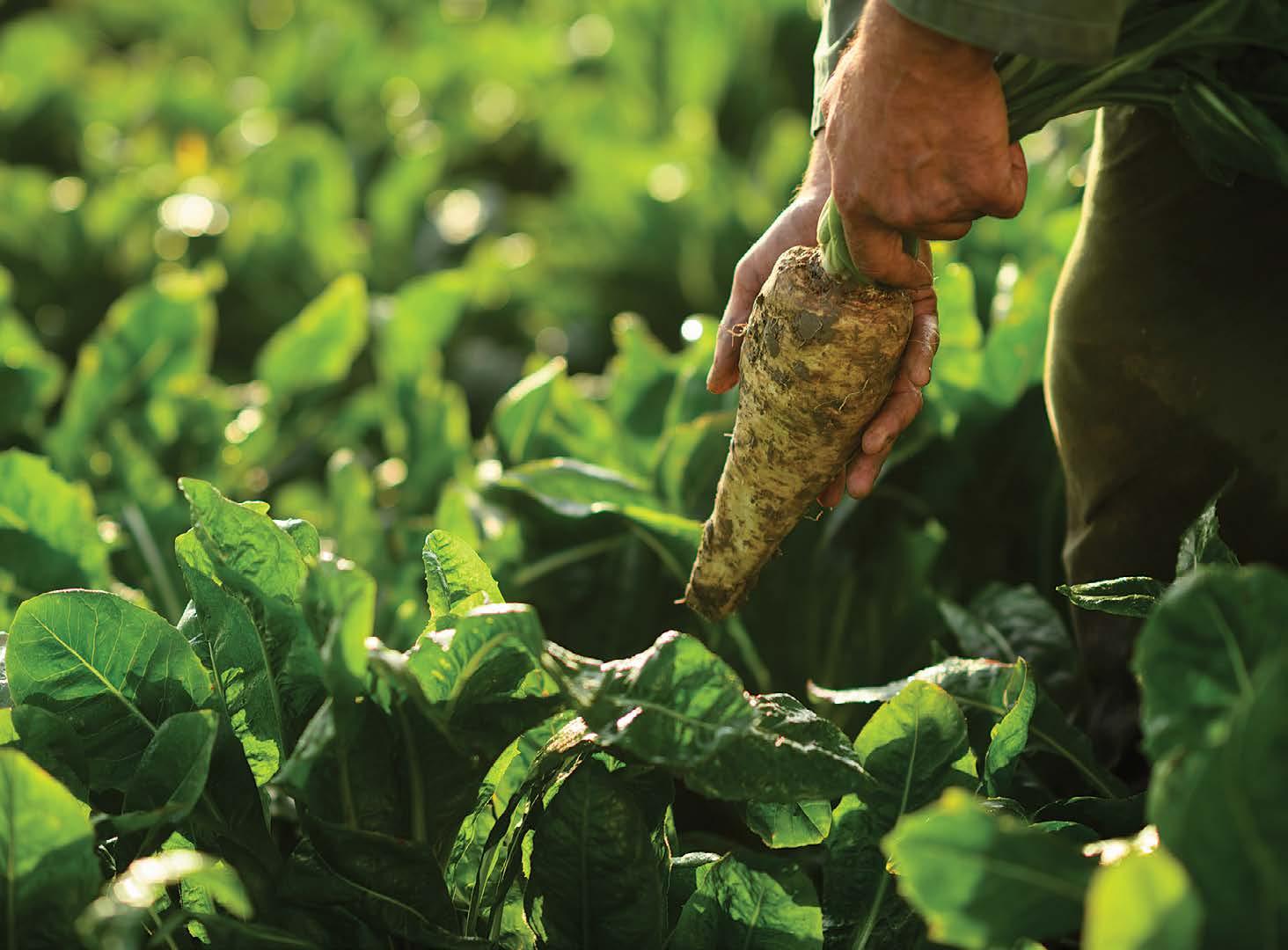
Food New Zealand 24
Boost your HSR with Hawkins Watts
Consumer research shows shoppers increasingly recognise and use health stars when buying food (MPI NZ, 2023). With the continued focus on improving health and wellness now is a great time to review your product portfolio’s Health Star Rating (HSR).
At Hawkins Watts we understand that formulating a product with a great Health Star Rating (HSR) can be a real challenge, especially when you're trying to reduce salt, sugar, saturated fat, or all three while still keeping your ingredient list short and sweet (excuse the pun).

Not to worry! Our team has spent a lot of time and effort learning exactly what it takes to boost the HSR of products and improve their nutritional value. We have a dedicated team of experts, a wide variety of specialty ingredients on hand, and top-of-the-line equipment to help us create innovative solutions that will maintain the overall sensory experience customers will love.
An ingredient we've found works particularly well for improving
HSR in a bakery item or snack bar, is GOFOS™. With a low glycaemic index, and similar organoleptic properties and browning effect as sucrose, GOFOS™ is a cost-effective way of increasing the positive nutrient points by adding fibre to the product. Using GOFOS™ in combination with our taste modulation options will help build the sweetness profile back up to ensure your product maintains the great taste your consumers are expecting.
So, if you're looking for a helping hand to improve the HSR of your products, our team at Hawkins Watts has the ingredients and experience to find the right solution for you.

Ingredients
Revolutionising meat tenderisation with Pulsed Electric Field Technology
New facility available for pilot scale meat tenderisation trials.
Authors: Indrawati Oey, Sze Ying Leong, Phil Bremer, Pat Silcock
Department of Food Science, University of Otago, Dunedin, New Zealand
Professor Indrawati Oey and her team at the University of Otago are making a significant impact on the New Zealand and global meat industry through their research on how to revolutionise and improve the tenderising of tough red meats, while reducing energy and water consumption.
In 2015, the New Zealand Ministry for Business, Innovation and Employment (MBIE) invested $16M in a six-year long Food Industry Enabling Technologies (FIET) programme. The programme aimed to develop and apply new technologies for the food processing industry, including helping the New Zealand meat industry to transform lowvalue meat cuts into premium export products.
Tenderising meat with PEF
One of the meat tenderisation technologies applied as an adjunct technology to sous vide tenderisation (SVT) was pulsed electric field (PEF) processing. Through the research efforts of three FIET funded PhD students (Amali Alahakoon, Roman Karki and Feng Ming Chian), the potential of using PEF technology to increase
the efficiency of SVT for low value meat cuts such as brisket was demonstrated (Figure 1).
PEF processing was shown to modify the microstructure of both myofibrillar tissues and collagen, and to change the thermal properties of the collagen. As a result, PEF pre-treated brisket requires a shorter sous vide time (12-24 h) and a lower temperature (60ºC) compared to the processing condition currently used by meat companies. PEF treated brisket after SVT was perceived as having a better, more steaklike quality compared to non-PEF treated SVT meat.
This finding has provided the meat processing industry with the opportunity to turn what have previously been considered tough, low value cuts into tender, higher value products. In addition this finding has the potential to extend the current, limited use of PEF for animal products. However, many lower value meat cuts, such as brisket, owing to the presence of varying amounts of fat, muscle, collagen, and in some cases bone, vary in conductivity (ranging from 1 to 10 mS/cm) and are of a large size which make them difficult to process in existing continuous PEF system process, and often also do not meet the guidelines for hygienic design principles for meat processing equipment.
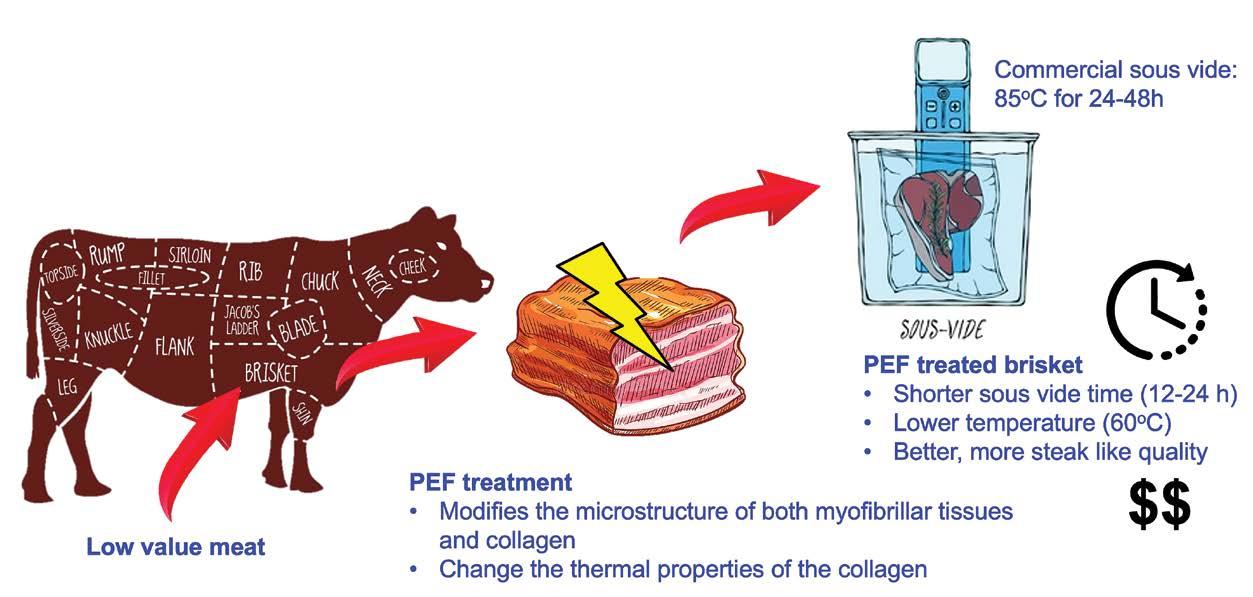
Food New Zealand 26 Research
Figure 1. New potential of using PEF technology to enhance the efficiency of sous vide tenderisation for traditionally tougher, low-value meat cuts such as brisket
Figure 2. Design concepts for a new PEF treatment chamber for meat tenderisation have been proposed (redrawn based on the work of Jaeger, Balasa, & Knorr (2009)). The preferred design includes a semi-continuous conveying system using the ground electrode as part of the transport box (top). Other designs include moveable electrodes designed as rollers (centre) and fixed and movable conveyor belts to transport meat pieces through an electrode pair (bottom)
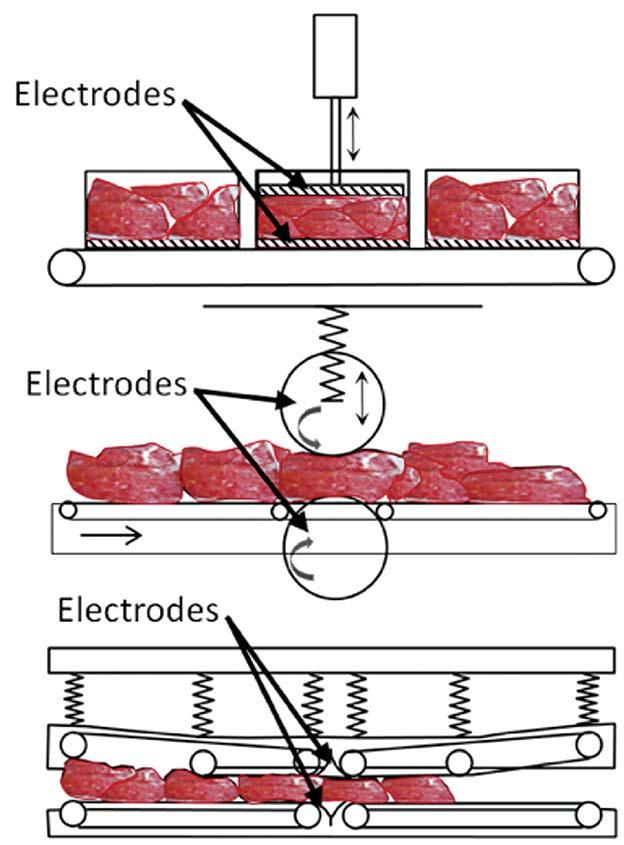
New equipment designed
To transfer PEF technology to the meat industry, a PEF chamber appropriate for larger, tougher, in-bone meat cuts, such as brisket and short ribs was designed by Prof. Oey in conjunction with Prof. Toepfl (Figure 2) and fabricated by the commercial PEF equipment manufacturer Elea GmBH which is based in Quakenbrueck, Germany. Elea GmBH is internationally recognised for its expertise and capability in PEF equipment design and production. The design and construction of this new PEF chamber was funded by contestable FIET Programme funding and by in-kind support (staff time and installation) from Elea GmBH. To couple with the new chamber, the University of Otago has invested in a new more powerful PEF generator. This new generator will greatly expand the PEF processing capability available in New Zealand.
The new chamber has software designed to control the pulse generator so as to guarantee a consistent and stable delivery of electric current. The design and fabrication process of the new PEF treatment chamber took approximately two years, with most of the delay due to the COVID-19 pandemic. Both the new PEF chamber and the new PEF generator have arrived in New Zealand (Figure 3) and will be installed at the Food Hall in the Department of Food Science, University of Otago, Dunedin. This new PEF system is available for local and international meat companies to use for pilot scale meat tenderisation trials. With a long and impressive history of collaborating with various food companies in New Zealand on
PEF technology, the installation of this new PEF chamber for meat processing at the University of Otago significantly strengthens and expands the Food Science Department’s capabilities and expertise and enables them to continue leading innovative research in the field. The new PEF chamber is the first of its kind in the world, and its success will have implications for the local and global meat processing industry. A workshop to demonstrate applications for the PEF technology will be held on 5th July 2023 in Dunedin after the closing ceremony of the 2023 NZIFST conference.
References:
1. Alahakoon, A. U., Oey, I., Bremer, P., & Silcock, P. (2018). Optimisation of sous vide processing parameters for pulsed electric fields treated beef briskets. Food and Bioprocess Technology, 11, 2055-2066.
2. Alahakoon, A. U., Oey, I., Bremer, P., & Silcock, P. (2019). Process optimisation of pulsed electric fields pre-treatment to reduce the sous vide processing time of beef briskets. International Journal of Food Science and Technology, 54(3), 823-834.
3. Alahakoon, A. U., Oey, I., Bremer, P., & Silcock, P. (2019). Quality and safety considerations of incorporating post-PEF ageing into the pulsed electric fields and sous vide processing chain. Food and Bioprocess Technology, 12, 852-864.

4. Chian, F. M., Kaur, L., Oey, I., Astruc, T., Hodgkinson, S., & Boland, M. (2019). Effect of Pulsed Electric Fields (PEF) on the ultrastructure and in vitro protein digestibility of bovine longissimus thoracis. LWT, 103, 253259.
5. Chian, F. M., Kaur, L., Oey, I., Astruc, T., Hodgkinson, S., & Boland, M. (2021). Effects of pulsed electric field processing and sous vide cooking on muscle structure and in vitro protein digestibility of beef brisket. Foods,10(3), 512.
6. Karki, R., Oey, I., Bremer, P., & Silcock, P. (2022). Pulsed electric fields application in meat processing. In: Raso, J., Heinz, V., Alvarez, I., Toepfl, S. (eds) Pulsed Electric Fields Technology for the Food Industry: Fundamentals and Applications. Food Engineering Series, Springer, Cham, 399-438.
7. Karki, R., Bremer, P., Silcock, P., & Oey, I. (2022). Effect of sous vide processing on quality parameters of beef short ribs and optimisation of sous vide time and temperature using third-order multiple regression. Food and Bioprocess Technology,15(7), 1629-1646.
8. Karki, R., Oey, I., Bremer, P., & Silcock, P. (2023). Understanding the effect of meat electrical conductivity on Pulsed Electric Field (PEF) process parameters and the ability of PEF to enhance the quality and shorten sous vide processing for beef short ribs. Food Research International, 163, 112251.
9. Karki, R., Oey, I., Bremer, P., Leong, S. Y., & Silcock, P. (2023). Effect of pulsed electric fields (PEF) pre-treatment on the quality of sous vide (SV) processed beef short ribs and optimisation of PEF and SV process parameters using multiple polynomial regression model. Food and Bioprocess Technology, 16(1), 216-231.
April / May 2023 27 Research
Figure 3. Front view of the new PEF treatment chamber, integrated into an upgraded pulse generator system
Undercover Operations
This article has been written exclusively for Food NZ, by the NZ Food Safety Science & Research Centre

This story began, fatefully, on 13 February, with a phone call to AnneMarie Arts, leader of the NZ Food Safety Science & Research Centre’s Horticulture Taskforce. This article was going to focus on the trend toward growing vulnerable crops like berries and salad greens under cover, and the advantages, if any, for food safety. Then the weather intervened.
Cyclone Gabrielle – the final, and worst blow
Waikato blueberry growers had lost all but 20% of their crops to a frost in October 2022. It was cruel. But that was just one in a series of weather disasters, coming at the end of a long stretch of cool and gloomy weather. Anne-Marie was still dealing with the fall-out from Cyclone Hale in mid-January, when lahars of perfectly finished Pukekohe onions spewed out over roads and filled gutters. As United Fresh representative, she immediately issued an urgent media release to warn the public not to eat any fruit or vegetables that had been in floodwaters. Existing grower protocols were clear – they simply could not sell any produce that had been partially or fully submerged.
As Anne-Marie lamented the tragedy for growers in Pukekohe and elsewhere, she watched through the window of her Auckland home as the pohutukawa tree in her garden started whipping around alarmingly, heralding the arrival of Cyclone Gabrielle, just one month after Cyclone Hale. No one then knew just what lay ahead that night.

Immediate response
The Centre offered the immediate assistance of its national network of scientists to support industry, however they could, and the Ministry of Business, Innovation and Employment (MBIE) quickly agreed to waive the usual requirement for industry to put in 60% of the funding for these urgent research needs.

“They are allowing the Centre to pay 100% of any cyclone recovery work, so we can just get on with it,” says Director Libby Harrison. Kyla Archer, the Centre’s Industry Research Liaison Manager is coordinating deliberations about what needs to be done with AnneMarie and other industry representatives. “There’s tremendous solidarity: everyone wants to help.”
Leaderbrand shows the way
Anne-Marie says these weather events will undoubtedly accelerate the trend to put more vulnerable crops under cover. For example, Leaderbrand in Gisborne is investing in a large indoor growing facility for their salad business, though the installation’s main driver was the ability to produce crops year-round, rather than protection against extreme weather. Food safety manager, Stefan Stewart, says that although they took a big hit in Gabrielle, losing a significant portion of their grapes, some other crops and all new outdoor plantings, they

Food New Zealand 28 NZFSSRC
Libby Harrison, Director of NZFSSRC
Kyla Archer, NZFSSRC Industry Research Liaison Manager
Stefan Stewart, Leaderbrand Food Safety Manager
Anne-Marie Arts, leader of the NZFSSRC’s Horticulture Taskforce
Growers are moving towards growing vulnerable crops like salad greens under cover consider themselves pretty lucky overall when compared with other growers. Their new indoor facility and independent water supply from a dam they have built nearby, will hopefully future-proof production. The rainwater from their dam is passed through a multi-media filter system and then UV-treated to drinkable standard, which is imperative for food safety with vegetables that will be eaten raw. The water is usually only used for crop irrigation, but after Cyclone Gabrielle, the water has been delivered to packhouses in tankers so it can be used for washing prior to packing as well.
Gisborne lost both power and its main water supply for a long period. Leaderbrand was able to help out by providing water to other food and wine producers in Gisborne. Although many of the East Coast roads were closed by slips, Leaderbrand's trucks were still able to get their time-sensitive greens to distribution nodes in the main centres, albeit the very long way round.
Stefan says the future of vegetable growing is looking more and more likely to be indoors. “The capital cost is huge, and industry is still refining the processes, but Gabrielle has shown we need to be more resilient to extreme weather events in the future.

Undercover growing less vulnerable
“When it comes to food safety, one of the advantages of growing indoors is that you have much lower risk of pathogens such as listeria, (which occurs naturally in the environment) splashing onto plants when it rains, or birds and insects depositing faecal matter.”
While outdoor blueberry crops in the Waikato withered irrecoverably in the October 22 frost, those under cover in the MIRO iwi/hapuowned and managed collective of 12 orchards around the North Island enjoyed substantial protection from wind, rain and hail, although
those in Northland, Gisborne and Tolaga Bay were still quite badly affected. The blueberry bushes are grown individually in 30 litre pots which rest on weed matting and are covered by long tunnels of plastic domed over semi-circular hoops. The temperature, and all inputs, are controlled. Plastic has been partially torn off in some locations, and in Tolaga Bay, 5000 of their 20,000 pots were blown over, damaging some of the shoots. The ground was up to 400mm in water but they only lost 200 plants altogether, plus 60 tunnel hoops. It remains to be seen what the long term effects on the plants may be of sitting in water for a period of time.
But MIRO CEO, Liz Te Amo has no doubt that all their orchards will harvest as planned from August to December. Despite the damage, she says, “The tunnels certainly offer good protection against rain and storms and allow you to continue harvesting when it rains – we were able to harvest the 2022/3 crop through some very inclement weather that would otherwise have made it impossible. And the tunnels give us complete control over how much water and fertiliser each plant receives.”
In Helensville (North-West Auckland), the staff of Superb Herb found themselves shin-deep in water, but their herbs were saved as they are grown on benches at waist level. However, the floods were just too high for a couple of table-top strawberry operations in Hawke’s Bay. All the plants had to be dumped.
Undercover pros and cons
Anne-Marie has the overview of our horticulture industries, and keeps close tabs on each crop. She says growing under cover is not a silver bullet when it comes to weather events or food safety and the transition certainly isn’t cheap.
April / May 2023 29 NZFSSRC
“We must be very careful that the water used for irrigation and spraying is potable standard, and that staff picking produce like strawberries, which cannot be washed, observe strict hygiene practices. Managers must ensure good facilities are available for that. Then, sadly, there’s the emerging risk of food terrorism – for example, the addition of harmful substances to water and nutrient supplies.”
“With increasing competition for water, the trend to building dams, and collecting rainwater in tanks, comes with the risk of pathogens from birds in particular. So, it must undergo proper treatment, as Leaderbrand is demonstrating.”
There are two types of undercover operation – high tech, where everything is automated, and plants are grown off the ground, and simple overhead cover that protects from rain, wind and hail. Moving under cover is not a practical or economic option with fruit trees and vines, though netting and windmills/helicopters provide some limited weather and bird protection. Cherries, because of their high value, are an exception.

Anne-Marie says, “Post Gabrielle, we are asking ourselves fundamental questions about where and how we should grow crops in future. Most fruit has a minimum winter chill requirement. The latitude band meeting that requirement is getting narrower and narrower.
“Cyclones Hale and Gabrielle topped a generally bad summer in the
North Island. We were already experiencing existing shortages of supply (overseas growers have been hit with climate crises too) as well as inflation, and import/export shipping headaches that saw whole containers of grapes dumped after sitting around offshore for too long.
“It is great that everyone is pulling together to support our growers. The industry is trouble-shooting on a day-to-day basis, as best it can. For example, so much produce has been going from the South to the North Island that they’ve run out of plastic containers. In the short term, consumers are going to be facing some eye-watering prices, and a more limited range of fruit and veg. They’ll need to be flexible, substitute where they can, and not necessarily judge a fruit by its appearance. Frozen veg is always a great option, too.
“We won’t know the final reckoning until October. We’ll have all the numbers then for the fruit and other crops we have managed to get to market. United Fresh compiles all the statistics in its publication Fresh Facts.
Libby Harrison says, “Growers and grower organisations deserve a lot of credit for holding the line on food safety. There has never been any question about compromising standards, despite the horrendous losses involved. It is extremely hard. We are totally focused on doing our bit towards long term recovery.”
Food New Zealand 30 NZFSSRC
Strawberries grown at ‘picking height’ may be spared the ravages of flooding
Packaging News roundup

Lush pastures on Graeme McNabb's and Rachael Anderson's 213-hectare dairy farm, backdropped by bush and the majestic Southern Alps, feature on Westgold’s new butter packaging

Westgold's new packaging
West Coast farmer Graeme McNabb is delighted that images of his farm are a feature of Westgold's new packaging which is designed to catch the eye of consumers around the world.
Westgold is changing its packaging, across all products, to build consumer awareness of the brand, as well as differentiating Westgold from other brands, and to showcase its quality, both locally and in international markets.
With its lush green pastures backdropped by bush and the majestic Southern Alps, Graeme McNabb and Rachael Anderson's 213 -hectare dairy farm is at the end of the road in the Kowhitirangi Valley inland from Hokitika. The picturesque property is where some of the first dairy farms were established on the West Coast because of its flat, fertile land and reliable rainfall.
"Not only is it a lovely part of the country as far as its scenery goes, but we grow great grass here year-round which in turn produces excellent milk," says McNabb, who moved to the West Coast property five years ago after running a dry stock farm in Canterbury.
Hamish Yates, Westland Milk Products' General Manager Sales and Marketing, says the new look packaging follows two years of research to better understand consumers' purchase drivers and the trends in food consumption. The design aligns with Westgold's brand story and reflects its home, the West Coast of the South Island.
"It is important that we demonstrate integrity of source, place and way of doing things. Showing West Coast photos and a map on our
packaging of where our products are sourced, grounds Westgold in something real and unique."
The first step in updating the packaging to align with consumer research was a tweak to Westgold's identity reflected through its marketing collateral, then to tone and manner with the tagline, "Real. Good.", followed by a new advertising campaign. The packaging, developed over the last two years, is the last piece of the puzzle, Yates says.
Hamish Yates emphasises that the change in packaging design will cement the Westgold brand as an international supplier of premium quality dairy products produced on the West Coast of New Zealand's South Island. "The packaging is changing, but our products, such as our award-winning butter, are very much the same rich, natural grass-fed dairy products they have always been," he says.
Westgold sells butter in 18 countries and in 2022 alone saw volume growth of 58% compared to the previous year. Westgold, is owned by Westland Milk Products, New Zealand's third largest dairy processor.

April / May 2023 31 Packaging
EU policy supports renewable carbon plastics
The long-awaited proposals for a policy framework for biobased, biodegradable and compostable plastics as well as for the revision of the currently existent Packaging and Packaging Waste Directive, commonly dubbed as PPWD/R, were published by the European Commission at the end of November 2022. Both proposals will bring substantial changes to the EU policy landscape covering plastics containing renewable carbon.
The proposed PPWR has three main objectives. First, to prevent the generation of packaging waste: to reduce it in quantity, restrict unnecessary packaging and promote reusable and refillable packaging solutions. Second, to boost high quality (‘closed loop’) recycling: make all packaging on the EU market recyclable in an economically viable way by 2030. And finally, to reduce the need for primary natural resources and create a well-functioning market for secondary raw materials, increasing the use of recycled plastics in packaging through ambitious mandatory recycled content targets.
It also acknowledges the value of a material property that had not seen specific support in the EU policy landscape before: Biodegradation and industrial compostability are at the core of measures targeting very specific packaging applications. Two years after the PPWR will officially enter into force, the following applications shall be compostable in industrially controlled conditions in bio-waste treatment facilities:
• Tea or coffee bags necessary to contain a tea or coffee product and intended to be used and disposed of together with the product.
• Coffee or tea system single-serve unit necessary to contain a coffee or tea product and intended to be used and disposed of together with the product.
• Sticky labels for fruit and vegetables.

• Very lightweight plastic carrier bags. This is a positive development in line with scientific findings.
Scientific evidence suggests that biodegradation is an environmentally beneficial property if collection and recycling of certain products is not possible even under completely appropriate management of the products. So-called “loss applications” end up in the environment in almost all cases and their in-situ biodegradation prevents pollution. Industrial compostability, however, requires collection and managed disposal, which means this makes sense mostly in applications that either offer secondary benefits such as increased collection of other bio-waste or improve compost quality (such as the lightweight plastic bags for collection or coffee grounds for compost quality), prevent pollution of biowaste streams (such as sticky labels on fruit) or that are so heavily contaminated and wet that their incineration is not economically feasible (as with tea bags and coffee pads). The Commission has taken a step into putting these findings into political practice and proposes to make the use of industrially compostable materials obligatory for these applications. With regard to nonpackaging loss applications, for which in-situ biodegradation makes sense, hopefully other legislation will follow.
In another aspect, however, the proposed Regulation fails to take an important step towards a more sustainable plastics industry. Among experts, stakeholders and the Commission it has been discussed repeatedly to include bio-based content as equal to recycled content in plastics. nova-Institute, as a propagator of the renewable carbon concept, which argues we need all feedstocks that allow us to shift away from the use of virgin fossil resources, is fully behind this proposal and we regret to see that it was not included. While recycling is the first choice in making a circular economy become reality, acknowledging bio-based content in plastics would offer an opportunity to address several critical issues related to the implementation of the circular economy. Specific policy framework for biobased, biodegradable and compostable plastics
https://renewable-carbon.eu/publications/product/the-renewablecarbon-initiatives-position-on-the-draft-eu-policy-framework-onbio-based-biodegradable-and-compostable-plastics/
Food New Zealand 32
Packaging
Biodegradable Apple stickers. Source Pixabay
Koehler NexPlus® OGR, is an oil- and grease-resistant, acrylate-free, sustainable paper, suitable for packaging foods such as fries, sandwiches, wraps, and burritos

Acrylate-free fast food barrier paper
Koehler Paper, part of the Koehler Group, added to its flexible packaging paper portfolio last year with the launch of products for use in the fastfood industry. Consumer demand for sustainable products and packaging has been evident in the fast-food sector for some time now, which is why catering operations are also increasingly looking for solutions in this field. In October 2022, Koehler Paper launched Koehler NexPlus Wrap®, a paper designed for burger packaging with extremely low grammage, onto the fastfood market. Then, with Koehler NexPlus® OGR, the company also brought an oil- and greaseresistant, sustainable paper onto the market, which is suitable for packaging foods such as fries, sandwiches, wraps, and burritos. The solutions that were originally launched as Koehler NexPure® paper have now been developed further and are available with immediate effect as Koehler NexPlus® paper. These products are now entirely free from acrylates.
These products are now not only made without the use of fluorochemicals, as they have always been, but also without the use of acrylates, making them a sustainable and environmentally friendly alternative to the packaging paper currently used in the fast-food sector.
Back in 2019, Koehler Paper invested 300 million euros in flexible packaging paper with its new production line 8. Since then, the largest MG paper machine in the world has been producing flexible packaging paper with barrier coatings with a wide range of functions. These include, in particular, odour, grease, mineral oil, and even oxygen barriers.
Paper-based Hug&Hold solution for bottle multipacks
Mondi, a global leader in sustainable packaging and paper, has won the coveted PPI Award in the Product Innovation category for its Hug&Hold packaging solution. Hug&Hold is a paper packaging solution designed and developed to wrap and transport PET beverage bottles, replacing plastic shrink wrap. It is a recyclable 100% paperbased solution, comprising a kraft paper sleeve and a corrugated clip to secure the bottles and offer a comfortable handle for transportation.
The Product Innovation Award is presented to companies that demonstrate how a newly developed product solves an existing need or problem. Hug&Hold is perfect for FMCG brands and beverage producers, who want more sustainable packaging solutions that appeal to consumers and meet their product protection needs.
A sustainable, functional and fully automated alternative to plastic shrink wrap means that brand owners can safely switch to the recyclable paper-based packaging solution, with a strong and stable solution that is made from renewable and fully recyclable materials, suitable for existing paper waste streams throughout Europe.
Mondi's Hug&Hold beverage packaging replaces plastic shrink wrap, while saving costs and driving efficiencies

April / May 2023 33 Packaging
More health benefits from Greenshell™ Mussels
A new clinical study has confirmed that Greenshell™ mussels can help reduce knee pain in post-menopausal women.
Researchers at Massey University working in the High Value Nutrition National Science Challenge’s ‘Musseling Up’ Research Programme found that after 12 weeks of taking mussel powder, study participants reported significantly less joint pain in their knees. The study has been published in the global journal Frontiers in Medicine
The women who took part in the study were aged between 55 and 75 years and had BMIs of 25-35. Half the group of 55 took three grams of Sanford’s Greenshell™ mussel Perna Ultra powder each day and the other half took a placebo. The scientists concluded that taking the Perna Ultra powder may slow down the degradation of type II collagen in post-menopausal women who have knee pain or discomfort.
Musseling Up Programme lead Dr Matt Miller of Cawthron Institute says the benefits would equally apply to whole mussels and other mussel products.
“This work is the accumulation of 6 years of collaborative research through the ‘Musseling Up’ research programme to understand the
benefits of Greenshell™ mussels – we’ve completed a series of studies that explore the effects of the bioactive compounds the mussels contain on people of different demographics, for different purposes” Miller says.

“We’ve discovered exciting new information about how these compounds can protect cartilage, which has the potential to reduce pain and enhance mobility of millions of people.”
Effective collaboration
The study was a collaborative effort between Massey University, New Zealand’s leading seafood company Sanford, the Cawthron Institute in Nelson, and the Crown Research Institute Plant & Food Research. The Massey University doctoral student who carried out the study, Ms Maryam Abshrini, and lead scientist Professor Marlena Kruger both say the results are important.
“We studied a range of biomarkers in the trial participants. Some
Food New Zealand 34 Research
Sanford’s Mussel farming operations
did not change, but we found that for women who had symptomatic knees, the marker that measures collagen breakdown was lowered as was joint pain for women taking the Greenshell™ mussel powder.”
“Anecdotally, study participants were telling us the mussel supplements enabled them to carry out daily life activities without pain. Our study captured clinical and personal evidence that the pain reduction was real for these women,” Ms Abshrini says.
The product consumed by the trial participants was Sanford’s PernaUltra mussel powder.
Sanford’s GM of Innovation, Andrew Stanley, says this latest result validates what his company has known about mussel powder for some time.
“The study was done specifically with our PernaUltra mussel powder, so we can only speak for that product, but this clinical work backs up what we are being told regularly by people taking our powder – that Greenshell™ mussel powder has significant health benefits which can be life changing for some people.”
“The Greenshell™ mussels are unique to New Zealand and we screen the ones we use in our powder production to select those with the optimum levels of bioactive ingredients. Its pleasing to know that what we’re doing can help women who may be experiencing knee joint issues as they age.”
Miller says this work has fantastic implications for New Zealand’s mussel industry.

“We could be one of the first seafood products in the world to have a health claim, which would create positive health benefits for so many people and create new opportunities for our seafood export sector to take advantage of.”
“That’s really been the motivation for Cawthron in acting as leaders of this Musseling Up programme – we’re keen to support New Zealand’s food industry to produce sustainable and high-value products and we’ve been thrilled to work with our partners at Sanford, Massey University and Plant and Food Research on research that will have an immediate real-world impact.”


Research
Andrew Stanley GM of Innovation at Sanford
Musseling Up Programme lead Dr Matt Miller of Cawthron Institute
Pāmu Deer milk, a lifechanging natural superfood
Scientific studies have shown that as people age, they lose muscle strength, mass and bone density. This can lead to an increased risk of falls and fractures. Menopausal women are particularly affected, with the bones starting to lose calcium and other important minerals, and one in two developing osteoporosis.
There are numerous nutritional supplements and medications available to help with this, but an innovative, transformational, and natural, new option has entered the market - Pāmu Deer Milk.


Food New Zealand 36 Dairy News
Hamish Glendinning, Pāmu Deer Milk Business Lead
Pāmu Deer Milk is produced by Pāmu, New Zealand's largest deer farmer. It has significantly higher protein and calcium content compared with other milk products and contains vitamins and minerals that support skeletal and immune health, with additional minor components possessing anti-inflammatory effects. Pāmu Deer Milk is currently sold to consumers across Australasia and Asia.
Clinical trial
A 2021 clinical trial by Pāmu and Massey University found that Pāmu Deer Milk improved nutritional status, muscle mass and physical performance in women aged 65 and above. The trial recruited 120 women over the age of 65 with a lower to normal BMI to consume either 200ml of Pāmu deer milk or a commercial oral nutritional supplement daily for ten weeks. Ninety percent of respondents recommended using Pāmu Deer Milk. Further observations were that Pāmu Deer Milk may support bone health in menopausal women, by reducing bone breakdown and bone loss over time.


About Pāmu
Pāmu has been developing the deer milk business for over five years, selling domestically as well as exporting to several markets across Asia-Pacific. Pāmu Deer Milk is sourced through a partnership with Peter and Sharon McIntyre, who run a deer farm near Gore and now through the company’s own farm Aratiatia, in the North Island’s central plateau.
Hamish Glendinning, Pāmu Deer Milk Business Lead, sees enormous potential for the product to carve out a defendable position in the aged nutrition space with a natural and unique product offering, at the same time offering increased returns to deer farming in New Zealand.

“With a rapidly ageing population and the health challenges which come with this, we are confident there will be increased demand for clinically proven, natural product solutions. This is an exciting innovation, a natural product with concentrated nutrition that we believe will make a difference to those who are wanting to restore mobility and strength as they get older.”
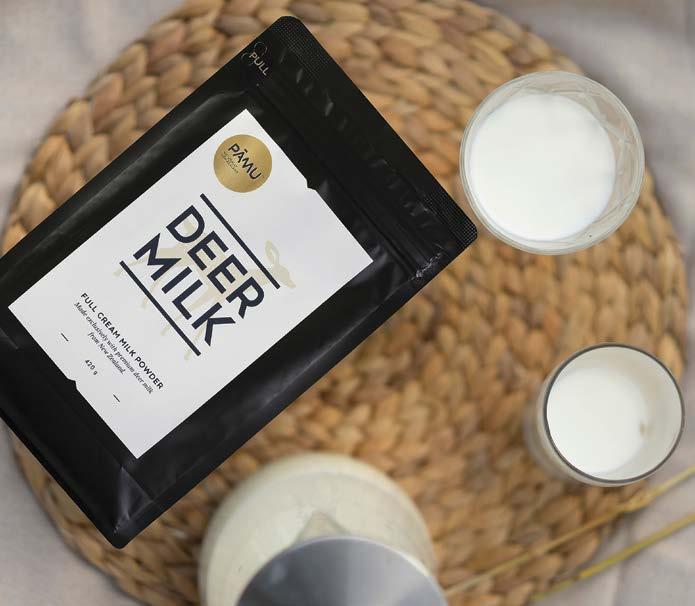
April / May 2023 37 Dairy News
Massey University Lead Researchers, Marlena Kruger left, and Pamela Von Hurst
Dewatering of waste expands disposal options


Delivering wet, possibly hazardous and unhealthy heavy waste from processing facilities to landfill facilities expends excessive fossil fuels, and risks soiling public roads.
The price of landfill disposal paid by waste producers is inevitably going to rise, as demonstrated by the New Zealand National Waste Levy introduced as part of the Government’s wider plan of reducing the ever-increasing amount of rubbish ending up in landfills.
“Landfills themselves will become scarcer and more expensive, with increasing community and government concerns over damage created to water tables and atmospheric emissions,” says Michael Bambridge, an environmental engineer and wastewater treatment specialist with more than 40 years’ experience in food, beverage and municipal wastewater treatment and waste recycling in New Zealand and Australia
He says greenhouse gas emissions-reduction targets set by New Zealand’s Ministry for the Environment signpost a clear pathway to a cleaner, greener future, including:
• New Zealand’s Nationally Determined Contribution (NDC1) under the Paris Agreement is to reduce net GHG emissions to 50% below gross 2005 levels by 2030.
• Net zero emissions of all greenhouse gas (GHG) emissions other than biogenic methane by 2050.
• 24% to 47% reduction below 2017 biogenic methane emissions by 2050, including 10 per cent reduction below 2017 biogenic methane emissions by 2030.
“In practical terms, this means the future is arriving very quickly for food and beverage producers. Projecting their risks years and decades
Food New Zealand 38 Engineering
A heart of stainless steel in the CST Wastewater Solutions wastewater screen drum, which can withstand shock loads and larger solids that most other screens using lighter mesh construction cannot handle
KDS technology with its multi-roller system, eliminates sticky processing spillages by producing a drier, waste that is more easily transported and recycled
ahead, leading food processors can see that prevention will rapidly become far less expensive than cure,” says Bambridge, owner of CST Wastewater Solutions, who bases his observations on the scores of waste processing and wastewater treatment plants and equipment his company has installed in both New Zealand and Australia, including for major household names in the food and beverage industries. He says the important components of such WWTPs – including more efficient screening and dewatering of solids to be disposed of –are fundamental to efficiently extracting waste and ensuring solids output is delivered in a lighter, cleaner, dryer and more suitable state for composting and recycling.
“It just makes sense in both an environmental and businesses situation. Sodden, hazardous waste can cost more than $NZ200 a ton to transport to landfills and landfills themselves are an increasingly expensive and scarce resource. Some New Zealand councils are already warning that their landfill facilities will be full before the end of this decade, and there is strong community opposition to opening new ones.
One company’s response
Putting its money where its mouth is, CST Wastewater Solutions has invested in local production of its range of rotary drum screens which, with high performance compaction, can reduce by up to half the volumes of solids to be transported and placed in landfill.
The rotary drum screens are now being manufactured in Australia, rather than imported from the other side of the world in a time of stretched supply lines. The move to local manufacture and high engineering standards increases quality and supply to Australasia and South Asia.
More efficient drum screening technology – featuring a 0.5mm rotary screen, complete with compactor – was used by a subsidiary of Kraft Heinz to replace the previous, 1.0mm-screen plant . Screens down to 75 microns are also available. In service, this installation has allowed improved and greater removal of solids from the wastewater, with considerably better solids capture.
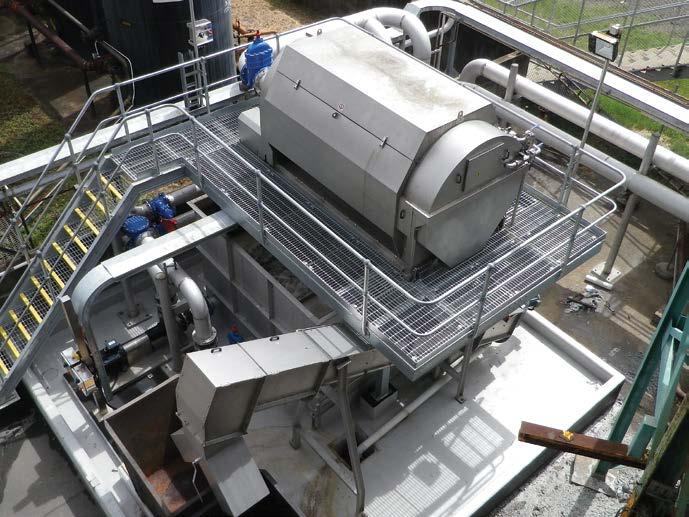
“Well-designed rotary drum screens are also engineered for far greater whole-of-life performance, which takes the pressure off engineering technology and operations staff who may otherwise be left with the
consequences of non-engineering-qualified decision-makers buying the cheapest technology available and leaving staff to clean up the mess if it fails. This is very short-sighted and very risky.”
“Itisimportanttorememberthatalotoffoodandbeveragecompanies (and councils) just don’t have the engineering and technical staff on the payroll to provide the standards of maintenance for long term trouble free operation”
Drum screening technology is proven in the toughest environments, including meat, dairy, poultry, fishery, and livestock plants. Typical industries to use the Rotary Drum Screen include general food processing (vegetables, fruit, starch processing), beverages (beer, wine, juice, soft drinks), slaughterhouses and abattoirs, tanneries, pulp and paper mills, textile plants, plastic manufacturers and many more industries.
In many industrial plants, these screens allow recovery of fat and proteinaceous material, which is all worth money to companies seeking to sustainably maximise their use of resources, ” says Bambridge.
Sludge dewatering for small-to-medium operations
Another clean, green waste management technology introduced to the New Zealand market is the KDS sludge dewatering technology that reduces waste volume by up to 90%.
The multi-roller system, already in use in New Zealand and Australia, eliminates sticky processing spillages by producing a drier waste that is more easily transported and recycled, The more compact, drier product radically cuts landfill needs while reducing transport costs and helping prevent any potential spillages onto public roads during transport.
KDS applications include thickening and dewatering of Dissolved Air Flotation (DAF) sludge – a very common wastewater application The KDS achieves solids capture of 95-99% sludge at a dryness of 1520%. Waste activated sludges are typically 15-18% dryness.
Benefits proven in service
The technology has been proven in service in New Zealand by an international fruit processing facility in Hawkes Bay that processes tens of thousands of tons of fruit for both local and export markets, Used on fruit such as apples and pears (and suitable for a wide variety of other fruit) the technology dewaters wet, sloppy screened waste from processing, reducing waste volumes by up to 90%, improving OHS and cleanliness outcomes and radically reducing the cost and spillage issues of disposing of waste.
The KDS typically handles 6m3 per hour of sloppy waste containing leaves, twigs, and unsuitable fruit. The output is transformed into waste for disposal or stock food, that is much cleaner, neater, and healthier to handle.
“The fruit processor uses the KDS technology to handle a highly variable quality and volume. “This first New Zealand adopter of the KDS technology had previously tried alternative technologies, but none handled the variable volume involved or dewatered the fruit waste enough to prevent excess water and product from creating an unhygienic site and causing leakage”
CST Wastewater has sales staff in New Zealand
April / May 2023 39 Engineering
CST Wastewater Solutions’ high efficiency rotary drum screen in use on fruit and vegetables
What has happened to salary packages in the NZ Food Industry?
John Lawson, Lawson Williams Recruitment
The Lawson Williams 2022 National Staff Turnover Survey released in October 2022 showed some interesting changes in salaries through 2021 and 2022 in New Zealand. We now invite you to participate in the 2023 New Zealand Salary Survey.

Previous survey results supported what we have all heard, employees are being paid significant increases in salaries to stay with their existing employer or to be attracted to a new one.
Skills are in demand. For reasons such as Covid 19 and the closing of New Zealand’s borders, the ongoing skills shortage combined with an additional drop in supply created huge demand and resulted in a willingness (or often a desperation and resignation) to pay more for skills.
Alongside this, the increasing cost of living through 2022 and its predicted increase again through 2023 created an appetite in employees to seek higher salaries.
Current and detailed salary information.
In 2019 and 2021, NZIFST partnered with Lawson Williams and the NZ Food and Grocery Council (NZFGC) to develop and run the NZ Food Industry Salary Survey.

The survey is an Employer-only survey and assists businesses to answer questions like these.
• How have salaries moved over the past 2 years?
• Have significant increases occurred across all positions?
• How do our salaries compare to others in our industry sector
and how competitive are we?
• What is the variability in salaries across the regions of New Zealand?
• What benefits are being offered to attract and retain employees?
We invite you to participate in the 2023 New Zealand Salary Survey.

This year’s survey includes positions in the following disciplines:
• Technical - Product Development, Packaging, Process development
• Quality - QA, QC, Laboratory, Compliance, Food Safety
• Health and Safety
• Environmental
• Supply Chain, Transport and Procurement
• Operations and Production
• Engineering and Maintenance
We appreciate the support of our survey partners:
The New Zealand Institute of Food Science and Technology (NZIFST)
The New Zealand Food and Grocery Council (NZFGC)
Participate in the 2023 New Zealand Salary Survey here and receive the survey report FREE. Visit http://www.lawsonwilliams.co.nz, and select the “Surveys” option.
Food New Zealand 40
Specialist Recruitment - Permanent and Contract
John Lawson is founder of Lawson Williams Consulting Group. He initially studied Biotechnology at Massey and is a professional member of NZIFST. He now enjoys leading a team of recruitment consultants, helping people like you develop satisfying careers.
www.lawsonwilliams.co.nz
Careers
NZIFST News
59th Conference update – Registration now Open
The programme for the NZIFST 2023 conference is taking shape and registration is now open Take a moment to check out the updated conference website for information and suggested accommodation options with discounted rates. Click here
Early bird registration closes 31st May. With other competing events on in Dunedin, it is suggested that delegates get organised early to book flights and accommodation.
NZIFST Directory

EXECUTIVE MANAGER Wendy Bayliss PO Box 44322, Pt Chevalier
A uckland 1022
Ne w Zealand
Phone: 02 2 549 8483, Email: w endy@nzifst.org.nz
PRESIDENT Phil Bremer phil.bremer@otago.ac.nz
VICE PRESIDENT E sraa El Shall esraaelshall@gmail.com
TREASURER Grant Boston grant@boston.net.nz
With the submission of abstracts closing on the 17th March, the organising committee are in the process of constructing the conference programme. We are excited that this year there will be a joint opening plenary session for both the NZ Food Safety Science and Research Centre (NZFSSRC) symposium and the NZIFST conference. Session topics for the NZIFST conference include a Food Waste discussion forum; challenges and opportunities in the Agri-food sector; food integrity, security and circularity; sustainability and towards carbonzero; nutrition, digestion and health; fermented foods; food safety; and many more.
The deadline for submission of poster abstracts is Friday 28th April. Students should remember that entrants to the poster competition will be eligible for cash prizes and the prestige that comes with winning.
Special Conference events
Alongside an exciting presentation programme, there will be a number of networking and social events, including:
• NZFSSRC Women in Science Breakfast, hosted by Prof. Dame Juliet Gerrard; Mon 3rd July, 7.30-8.45am.
• Early Career Foodies Function for students and recent graduates; Monday 3rd July, 7.00-9.00pm.

• An optional food and beer matching dinner at Emerson’s Brewery; Monday 3rd July, from 7.00pm.
• Conference dinner and awards ceremony at the grand Dunedin Town Hall; Tuesday 4th July.
Post Conference Workshop
If you are interested in novel processing, Prof. Indrawati Oey will be holding a post-conference workshop on Pulsed Electric Field processing. This workshop will demonstrate the new equipment recently installed at the University of Otago to a small group of attendees. See the article on page 26 previewing this exciting new equipment. Further information and registration details for the workshop will be circulated via Nibbles and on the NZIFST events website. For enquiries, please contact Indrawati.oey@otago.ac.nz.
April / May 2023 41 NZ IFST
2023 Plenary Speakers
The committee is pleased to announce the following plenary speakers:
Prof. Dame Juliet Gerrard
Prime Minister’s Chief Science Advisor | Kaitohutohu Mātanga Pūtaiao Matua.
Juliet trained at Oxford University and moved to New Zealand in 1993 where her career has included roles in both Crown Research Institutes and Universities. Juliet’s research background is broad and interdisciplinary, with particular interests in fundamental and applied protein science. She has held an Industry and Outreach Fellowship with Callaghan Innovation, founded a start-up company, chaired the Marsden Council, served on the Board of Directors of Plant and Food Research, and is currently on the Board of Te Papa.
Since Juliet’s appointment in 2018 as the Prime Minister’s Chief Science Advisor she has supported the science and science advisor community to provide advice to the Prime Minister, ministers, and the public on a wide range of topics


Juliet’s paper is titled: Food Waste: a global and local problem.
Dr Helen Darling
Chief Executive/CoFounder Sumfood
After completing a PhD in Public Health, Helen co-founded Oritain in 2007. she then went on to found Sumfood and under that umbrella has been working to build food system intelligence through consumer reporting, price monitoring and social listening (founding InstatData in 2022). Helen has held several governance roles with local and national bodies including the Board of ESR, the advisory committee of Export NZ and international governance experience with the United States Pharmacopeial Convention (Expert Committee, Food Ingredients; Expert Panel, Food Fraud). As a food producer Helen has also been one of a small team that has developed a novel variety of cherry and achieved plant varietal rights.
Helen’s paper is titled: Food integrity, security, and circularity from a consumer-centric viewpoint.
Dr Kathy Glass
Distinguished Scientist, University of Wisconsin-Madison Food Research Institute
Kathy Glass joined the Food Research Institute at the University of Wisconsin-Madison in 1985 and currently serves as Associate Director. Her primary role is to work with the food industry to develop and validate formulation-safe foods. Kathy is an active member of several advisory committees and professional associations including the National Advisory Committee for the Microbiological Criteria of Foods and the International Association for Food Protection (IAFP). She has served as Past-President of IAFP and its Wisconsin affiliate, is the recipient of the 2011 IAFP Fellow Award, the 2017 National Cheese Institute Laureate Award, and 2019 Wisconsin Meat Hall of Fame. In addition, Kathy is a regular instructor at workshops on challenge studies, Listeria control methods, and dairy and meat safety. She earned her Doctorate in Food Microbiology and Safety at the UW-Madison, focusing on formulation safety of pasteurized process cheese products. Kathy has more than 155 invited presentations, 97 technical abstracts, 60 peer-reviewed publications, and three book chapters.

Kathy’s paper is titled: Formulating foods for microbial safety in the clean label era.
Craig Armstrong
Director (Customers), New Zealand Trade & Enterprise (NZTE)
Originally a farmer from Hawkes Bay, Craig leads teams who are growing businesses in the biological and manufacturing value chains. He has worked internationally in Board and Executive capacities with Lion, Cadbury, Yoplait, Dr Pepper/7Up and Heinz and is currently a leader with New Zealand’s international business development organisation, NZTE. He’s Chair of the Industry Advisory Panel for the High Value Nutrition National Science Challenge working on developing scientifically-proven health foods, Chair of the Industry Advisory to MPI for development of the F&B ITP and a Board Member of the NZProduct Accelerator, assisting businesses commercialise new designs and manufacturing methods. He’s a member of the MBIE College of Assessors, and a graduate of Massey University (NZ) and of Thunderbird School of Global Management (Arizona, USA).
Craig’s paper is titled: New Zealand’s national and international economy as it relates to food security

Food New Zealand 42 NZ IFST
Photo: Elise Manahan
Glen Neal
General Manager, Risk Management & Intelligence, Food Standards
Australia New Zealand (FSANZ)
Glen is responsible for the risk management and intelligence functions associated with developing food standards. This includes labelling, contaminants, composition, additives and foods requiring preapproval such as novel foods, public health nutrition standards, and the economics and social science inputs to standards development.
His background is in public health and he has held a range of leadership positions within New Zealand’s central government food and biosecurity authorities, such as the Ministry for Primary Industries.

Glen thinks that the mega trends of the increasing integration of global food supplies, emerging risks, increased attention on foods role in public health and tightening public sector budgets are strong forces that drive the need for increased collaboration, agility and creativity.
He is currently a member of the Singapore Food Story Advisory Panel and represents the work of FSANZ on a FAO Technical Working Group on cell-based food products.
Glen will present the ‘wrap-up’ paper “Reflections on "The New Normal" and what the future may hold for the Food Industry in New Zealand at the Conference Closing Session
See the conference website for more information about conference programme and speakers. Click here.
Call for Nominations for NZIFST Officers
NZIFST is governed by a representative Board and managed by an Elected Executive Committee. At the AGM, in July 2023:
• Current President Phil Bremer completes year 2 of a 2-year term in office
• Current Vice-President Esraa El Shall completes year 2 of a 2-year term in office.
• Current Honorary Treasurer Grant Boston completes year 1 of a second 3-year term in office.
• The three Elected Officer positions must be re-elected - These are currently held by Hamish Conway, Paulette Elliott and Bob Olayo.
We therefore invite your nominations for the following positions:
President
This is a 2-year term.
The current Vice President is seeking election
Professional and Fellow members are eligible for this role. Additionally, the nominee must have served on the Board for at least 12 months or have served on a Branch Committee for at least two years.
Nomination Form available from wendy@nzifst.org.nz
Vice President
This is a 2-year term.
Professional and Fellow members are eligible for this role.
Nomination Form available from wendy@nzifst.org.nz
Elected Officers
We have THREE positions on the Executive Committee for elected officers. These are for a term of 1 year.
All members except Student and Guest members are eligible for this role.
Nomination Form available from wendy@nzifst.org.nz
April / May 2023 43 NZ IFST
New Members
NZIFST welcomes the following new members and welcomes and congratulates those who have joined or been upgraded to Professional Membership. Welcome also to new student and Graduate members.
New Professional Member
Rasangani Sabaragamuwa MNZIFST Research Fellow The University of Auckland
New Standard members
Jessica Nalleli Carranza Rodriguez
Suzanne Cowling
Ciska de Rijk
Anuraag Dhani
Anne Goldman
Patrina Gounder
Harrison Hunter
Applications Technologist
Formula Foods
Senior Project Manager Danone Nutricia
Director Essence Compliance
Key Account Manager Hygiena
VP Consumer Research ACCE
Quality Systems Manager a2 Milk Company Ltd
Process Engineer
Leaft Foods
Rita Manca Technical Adviser NZ Food Safety - MPI
Sam Park COO Korure
Justine Paulin Quality Compliance Coordinator Barker Fruit Processors Ltd
Leon Wang Compliance Specialist
The a2 Milk Company Ltd
Jian Ming Wong Technical and Compliance Manager Bevie Handcraft NZ Ltd
Janine Hastie Account Manager
Sherratt Ingredients
Dewan Khan Account Manager TransChem
New Graduate Member
Serena Baptist Jobseeker
New Student Members
AUT: Thomas Ashworth, Nicholas Vince.
Lincoln University: Jannawie Adhikari, Akashdeep Akashdeep, Anuja Bahadkar, Aravind Balan, Rutvika Banekar, Katie Brown, Lindcy
Daniel Suseela, Mark Dcosta, Japa Dhiraj Reddy, H.N.Nadeesha Dilrukshi, Maureen Duncan, Benjamin Gibbs, Haoxin Guo, Katherine Hamilton, Vijaya Vani Narayan Jagath, Nitin Kaloya, Shiyu Lan, Hazel Liu, Beata Mahalean, Zoe McNamara, Emily Osborne, Chelsiya P C, Anushree Patil, Manu Prasad, Vani Sharma, Jaspreet Singh, Ankit Singh, Wenwen Teng, Amrutha Tomy, Vinh Tran, Sheetal Tuli, Tony Johny Vazhacharickal, Saloni Vyas, Xuanzhi Wang, Aleena Wilson, Massey University: Abdulquadri Alaka, Hao Cui, Vitor Geniselli da Silva, Di Lu, Josiah Lyford, Sihan Ma, Ili syuhada Mohd Daud, Zheng Pan, Katie Sou, Hannah Spencer, Wen Ting Toh, Tohare Ambar, Shridharrao Tohare, Jacqueline Tonkie
University of Auckland: Chen Chen, Sophie Coyne, Teamar Dabdawb, Lingyun Guan, Vani Kotnala, Kangning Li, Murou Li, Yijun Liu, Yilin Liu, Zade Mahdi, Saifei Pang, Sarah Sherlock, Hui Ru Tan, Pei Wang

University of Otago: Priyanthi Chandravarnan, Kate Edens, Rebecca Roberts, Joy Sim, Khushboo Soni
Branch News
Central Branch
Welcoming our Massey students
Each March, as the summer heat wanes and Massey’s food technology students return to the hive, NZIFST Central Branch hosts a mix and mingle meeting to allow students and industry members the opportunity to share perspectives on food industry prospects and the value of a career in food science and technology. Around a dozen current industry members attended the session to interact with about twice as many returning students. As always, this meeting was hosted at the atrium in the Riddet building at Massey University’s Tiritea campus, Palmerston North. In addition to the opportunity to chat, drink locally brewed beer and snack on sumptuous food (empanadas on this occasion), branch stalwart Assoc. Prof. Lara Matia-Merino invariably uses the session to make a hard pitch to students to join NZIFST through the local branch with impressive success. Consequently, Central Branch membership is constantly refreshed with tomorrow’s industry professionals and their engagement adds
considerably to the culture of our branch. As industry-based members we welcome and appreciate the contribution of Massey’s food science and technology students to our regular meetings.
Allan Main FNZIFST
Food New Zealand 44
NZ IFST
Associate Professor Lara Mateo-Merino (back, left) addressing returning Massey University food science and technology students, cajoling them to join NZIFST
Two guest scientist lectures – plant proteins
Directly after the student mix and mingle, two lectures were scheduled featuring visiting food scientists from Europe speaking on aspects of plant protein performance. In addition to the in-person attendance (a satisfying 38 attendees), these lectures were transmitted as a live webinar (29 links) and remain in the members’ section of the NZIFST website for viewing. Since the full presentations are available for interested members to view in their own time I shall only provide a brief summary here.
The first presenter was Mario Martinez, Assoc. Prof. in the Dept Food Science at Aarhus University, Denmark, who spoke on “Sustainable Exploitation of Plant Proteins to Design Plant-based Foods”. His address acknowledged the developing role of plant protein substituting for animal proteins in the global diet, and focused on how plant protein ingredients should be improved to maximise their environmental benefits.
Consumer adoption is necessary to effect environmental benefits but consumers are resistant to adopting alternatives to animal protein foods that provide an inferior sensory experience. In particular the challenges of creating credible plant-based meat alternatives were addressed with the primary issue being to replicate the texture of meat. Flavour is seen to be more amenable to food formulary, given the array of flavour and taste agents available to the modern technologist. However mimicking the fibrillar structure of meat with predominantly globular plant proteins presents a higher level of challenge. Core to Mario’s presentation was the realisation that less refining of plant proteins not only provides superior environmental footprint, but actually allows the plant protein ingredients to function more effectively in alternative-meat systems.
Our second speaker was Laura Roman, Asst. Prof. at the Univ Valladolid, Spain and Research Fellow at Aarhus University’s Dept of Food Science. Laura has already had a distinguished academic career including receiving the For Women in Science Award offered by L’Oreál, UNESCO and the Royal Danish Academy of Sciences and Letters. Laura’s talk addressed a complementary topic to Mario, focusing on the specific values of lupin as a protein source, her talk was titled “Transition towards Climate-robust Protein Crops: The Potential of Lupin”. Lupin is a legume, the class of plants that includes soy and peas that dominate current plant protein ingredients due to the highly concentrated proteins in their seeds. Lupin provides an additional source of value for providing environmentally friendly plant protein through its adaptability to diverse climatic conditions
and topographies. (Aside: this audience member did not miss the irony of lupins being seen as an environmentally friendly crop given the devastation wrought on Canterbury’s braided rivers by garden-escaped lupins.) Lupin seeds provide impressively high levels of protein of high nutritional value and good functional performance. However there has to be a downside, and with lupins it is the antinutritional chemicals that associate with the protein. The antinutritionals of concern are quinolizidine alkaloids that induce heart arrhythmia and nausea in humans receiving a toxic dose. Laura presented work on a blue lupin (Lupinus angustifolia) breeding programme directed to reducing antinutritional toxin levels whilst enhancing their robustness to heat stress and higher atmospheric carbon dioxide.
If these topics are of interest to readers, then a visit to the NZIFST members’ area is suggested to see the lectures in full. You will need to log in to the Members area. The talks are certainly worth your time and the science value is supplemented by some humorous mis-translations in the speech recognition generated sub-text (for example “carbohydrate” gets translated as “cargo hybrid” early in the talk). How often can you be educated in an aspect of food technology and simultaneously amused?
Allan Main FNZIFST
Otago/Southland
Networking gathering, Invercargill
It’s always a challenge in a wide geographic area to have events that are accessible by all members. Most of our Otago/Southland branch events are held around Dunedin, where the bulk of our members are, but there is also a strong food industry presence in Southland. For the first time in a number of years we held an event in Invercargill at the start of March.
We’d originally expected to host a small gathering of a dozen or so people, but in the end had an excellent evening with over 40 people joining for nibbles, drinks and networking at the Pioneer Food Hub, a local commercial development kitchen with a great informal reception area, ideally suited to this type of gathering.
It was great to bring together a mix of new food industry entrepreneurs and experienced career foodies representing more than a dozen organisations from small to large, consultants to corporates. I know I didn’t manage to get to talk to everyone, but had a great night and I hope you all did to!
A big thank you to our sponsors, Brenntag and the Pioneer Food Hub, for their support of this event. Without your assistance, we could not have made it the success it was. Brenntag is a key supplier of ingredients and solutions to the New Zealand food and nutrition industry. The Pioneer Food Hub is a Southland development centre for scaling up and testing concepts in an industrial kitchen. And lastly, to all who came, a big thank you for coming along! A networking event is only as good as the people it brings together. We hope you enjoyed it and made some new ccontacts: we certainly did. We are already working to plan a second event in Gore in early May so look forward to seeing you there.
And if there is anyone you know who would be interested in joining future events in Southland, please let them know to get in touch! Email graham.eyres@otago.ac.nz
 Graham Eyres MNZIFST
Graham Eyres MNZIFST
April / May 2023 45 NZ IFST
Central Branch members and newly returned Massey students pay close attention to the presentation on sustainable plant proteins as functional ingredients from Mario Martinez, Associate Professor in the Dept Food Science at Aarhus University.
The Food Awards

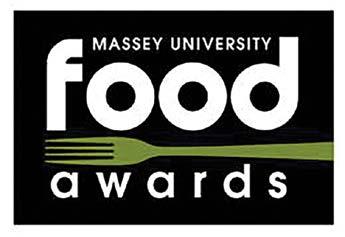
Reprinted from the NZIFST 50th Anniversary Book, published in 2015.
Then and now - left, the event logo in 2002, and right, the logo now
At the 1985 NZIFST AGM, Dr Mary Earle suggested that it was time the importance of innovation and product development be recognised with an award, of some sort. This idea was adopted with great enthusiasm by NZIFST and became an annual event, The Food Awards, with generous sponsors and a gala dinner for the presentations, became the launchpad for a number of new products that still are on the market.
Writing for NZIFST Journal, The Food Technologist, in 1997, Chief Judge Norman Lodge reviewed the awards.

It was with something akin to shock that I suddenly realised that this year the annual Food Awards celebrates its 12th Anniversary. This caused me to reflect on how things have changed over the years to reach today’s standard of “The Carter Holt Harvey Food Awards 1997”.
At the first gathering in 1986 to celebrate innovation, technological excellence and pure Kiwi ingenuity in the development of new food products, less than 100 assembled to mark the occasion. The awards were then known as the Printpac Food Awards, and the premium prize went to Continental Noodles and Sauce. There was little publicity and the winners departed feeling well pleased with their efforts.
By comparison, this year’s awards, with the major sponsorship of Carter Holt Harvey Packaging (in the intervening years the awards had been sponsored by Printpac and UEB) were presented at a glittering spectacle at the Ellerslie Convention centre – 600 people from all sectors of our industry gathered to mix, mingle and await with anticipation the announcement of the winners. Sure, it is a spectacular event, but fundamentally the reasons behind the awards haven’t changed. The idea is to reward all those talented individuals and companies for keeping New Zealand’s food innovation up with the rest of the world.
Food New Zealand 46 NZIFST History
The 2002, 2004 and 2006 Massey University Food Awards were the responsibility of Ray Winger who was then Professor of Food Technology, based at Massey University Albany
Norman Lodge was chief judge for the Food Awards for a number of years

Photographed at the 1997 Carter Holt Harvey Food Awards presentation dinner, NZIFST representatives, from left, Gerry Townsend (Wattie’s), Tanya Reid (Past President) Massey University, Sandra Murray, Davis Gelatine (now at Hawkins Watts), and Margot Buick, (Past President) Massey University.

NZIFST ran the awards annually from 1986 until 2000. All the Awards events were managed and organised by NZIFST volunteer members. Carter Holt Harvey bowed out of sponsoring the event in 1998 and Massey University picked up the baton in 2002 and ran the Massey University Food Awards, biannually until 2006. Judges were still sourced among NZIFST members and the NZIFST had its own Award category.
In 2008, Massey bowed out and ceded the ‘event’ to Goode PR, and then resumed control in 2010, and continues to run the event. The University perceives the Food Awards as a place to showcase New Zealand’s excellence in food innovation on the global stage.
While the management of the Awards has changed, the broad structure, with entries being assessed for technical quality in formulation, processing and packaging design, as well as the ‘tastes good’ factor, and a gala dinner for presentations remain. Norman commented in his piece that little publicity was achieved in 1986, but the value of a professional publicity machine sees lots of coverage for the event nowadays. NZIFST is still represented among the judges, but its role at the inception has been largely forgotten.
April / May 2023 47
History
NZIFST


DON'T MISS THIS EVENT Come and join us for the science and technology and the people. The best place to network with your colleagues Register HERE Conference Committee Chair is Graham Eyres graham.eyres@otago.ac.nz For more information contact wendy@nzifst.org.nz






















































































 Graham Eyres MNZIFST
Graham Eyres MNZIFST









